Anglia Farmer
News
'Clock ticking' to back British farming


Arable 10th anniversary for yield network
Soil special Be wary of paying twice for SFI
Beef and sheep
How to support youngstock performance
Professional services
Farmland prices set to outstrip inflation
Water Drought could return this summer
Reaping rewards: How to grow a world record wheat crop
March 2023
Serving the farming industry across East Anglia for over 40 years
Number crunching: Good results expected from Big Farmland Bird Count
Noventum Power Limited is one of the leading large-scale renewable energy companies in the UK




LANDOWNERS...
We are here to offer you THE BEST OF BOTH WORLDS!
We will work with you, helping you towards developing your land into an income generating asset that can provide additional income streams for your business.
The benefits include:

•Diversifying revenue streams away from farming or other land uses
•Deploying solar power or wind turbines on your available land



•Maintaining agricultural use through sheep grazing when possible
We are looking for sites between 50 acres and 200 acres, ideally close to a nearby grid connection Land should be relatively flat and Grade 3 or lower

Well screened by hedges and a good distance from residential property
Not in a valued landscape or near historic buildings
We have a team of experienced, highly proficient renewable energy experts. They have an extensive record which encompasses the following:
Land Acquisition
Investment
Construction
Energy Storage
Planning and Permitting Grid Solutions
Power Engineering & Grid Connections
Operation and Maintenance
If you would like to discuss how to potentially earn a secure and long-term predictable income stream from your land, please get in touch and contact us on:
89562

info@noventumpower.co.uk One Glass Wharf, Bristol BS2 0ZX www.noventumpower.co.uk 0117 990 2897
Anglia Farmer
EDITORIAL
Editor:
Johann Tasker | T: 07967 634971
E: johann@ruralcity.co.uk
Design:
Mark Shreeve | T: 01502 725839
E: mark.shreeve@micropress.co.uk
Advertisement production:
Polly Coleman | T: 01502 725841
E: polly.coleman@micropress.co.uk
ADVERTISING SALES
Chloe Miller | T: 01502 725844
E: chloe.miller@micropress.co.uk
Daniel Rice | T: 01502 725858
E: daniel.rice@micropress.co.uk
Mat Roffey | T: 01502 725854
E: mat.roffey@micropress.co.uk
Mark Tait | T: 01502 725803

E: mark.tait@micropress.co.uk
Anglia Farmer is a controlled circulation magazine published monthly for farmers and growers in the eastern counties. To be included on the circulation list, a farmer must have a minimum of 70 acres of land, or 50 dairy/beef stock, or 50 breeding sows/250 growing stock, or 15,000 laying hens/broiler chickens. Intensive horticulture units are required to have a minimum of two hectares.
Subscription is £18 a year (including postage). No responsibility can be accepted by the publishers for the opinions expressed by contributors.
If you no longer wish to receive this magazine, please email your name, address and postcode as it appears on the wrapper to adam.gunton@micropress.co.uk
© Countrywide Publications 2023
Published by Countrywide
Publications, Fountain Way, Reydon Business Park, Reydon Suffolk IP18 6DH



T: 01502 725800
Printed by Micropress Ltd, Suffolk.
T: 01502 725800

OPINION Johann Tasker
Time for the government to back Britain's farmers
It's often been said that people with full stomachs fail to realise the importance of farmers. Only when people go hungry – or can't get the food they want – do they start to take a keen interest in where it comes from.
The media furore which followed last month's tomato shortage is a perfect example. All of a sudden, consumers wanted to know why supermarket shelves were empty – and when they would be full again.
The government, of course, blamed someone else. Or rather said the shortage was due to bad weather in Morocco and Spain – both countries which supply the UK with tomatoes during the cold winter months.
That's true – at least partially. But like many things the government says, it is more complicated than that. And the reasons for the shortage of tomatoes, cucumbers and other crops on supermarket shelves, deserve closer scrutiny.
We could, of course, grow salad crops allyear-round in this country. But gas costs have soared over the past year, making it too expensive to heat glasshouses and still make a profit at the sort of prices consumers are willing to pay for fresh produce.
The NFU has been warning for months that this winter would be particularly precarious. Not because of the weather, but because rampant agri-inflation has seen input costs increase far higher than any increase in the value of farm output.
Many farmers have long suspected that senior politicians don't take food security and self-sufficiency seriously enough. Now growers and livestock producers could see those fears become reality. Rather than backing British farmers, it seems the government would prefer to import food from abroad.
Witness how far farming is down the pecking order when in UK trade deals with other countries. Even former Defra secretary George Eustice has conceded that the recent trade deal Australia had given too much awary in return for too little.
These are uncertain times. If the government really wants to maintain UK food security, it should back British farmers and ensure they are able to produce food profitably at a price consumers can afford – not rely on cheap imports.
Johann Tasker Editor
Vol 43 • No 3 • March 2023 Contents MARCH 2023 • ANGLIA FARMER 3
News .................................................................... 4 Arable .................................................................. 9 Soil health 29 Livestock ........................................................... 37 Professional Services .................................. 45 Water ................................................................. 55 Final Say 62
Visit our website for all the latest farming news BOWIE LOCKWOOD 02476 459000 sales@bowielockwood.co.uk SHORT OF STORAGE SPACE? SHORT OF STORAGE SPACE? RIDBA Rural & Industrial Design & Building Association Competitive prices for all your agricultural & industrial requirements Competitive prices for all your agricultural & industrial requirements CONTACT US NOW! 67639
'Clock ticking' for government to back British farming
•
NFU warning over food security
• Actions speak louder than words
• Farmers battling against inflation
The clock is ticking for the government to back British farmers and ensure their vital role in feeding the world, industry leader Minette Batters has warned.
Delivering the opening address at last month's NFU Conference, Ms Batters outlined the raft of challenges faced by farmers – and warned that the government must do more to support the sector.

“More often than not, it has been incredibly hard getting government to back up its rhetoric with concrete actions,” she told conference delegates on 21 February in Birmingham.
“The time is nearly up for government to demonstrate its commitment to food and farming in our great country – not just by saying they support us, but by showing us they do.
“I won’t let the opposition off the hook either. I believe the rural vote will be crucial in the next election."
Cornerstones
A prosperous farming sector was built on three cornerstones. They were boosting productivity, protecting the
environment and managing volatility. Any government should use them to underpin its farming policy.
Cornerstones
“The clock is ticking,” said Ms Batters.
“It’s ticking for those farmers and growers facing costs of production higher than the returns they get for their produce. It’s ticking for the country, as inflation remains stubbornly high, and the affordability and availability of food come under strain.
“It’s ticking for our planet, as climate change necessitates urgent, concerted action to reduce emissions and protect our environment.
“And it’s ticking for government –
Farmers face raft of stiff challenges
Challenges highlighted by the NFU include farm labour shortages and high energy prices – as well as the phase-out of the basic payment scheme.
Ag-inflation appears to have slowed – for now at least. But many input cost rises continue to outstrip increases in the price consumers are paying for food – and the value of output as it leaves the farm gate.
Agricultural input costs have risen almost 50% since 2019, says the NFU. UK egg production has fallen to its lowest level in nine years. In 2022, for example, UK egg packers packed almost a billion fewer eggs than in 2019.
NFU president Minette Batters said: “This
was also the year that the potential impact of climate change really hit home. The extraordinary temperatures we experienced in July topped the previous record by almost a degree and a half.
“While many parts of the country have experienced huge amounts of rainfall recently, impacting farming operations over autumn and winter, some counties still remain in official drought status.
“Despite all this, NFU members and the farmers and growers of Britain continued to bring in the harvest – to produce the nation’s food and to keep the country fed through tough times.”
to start putting meaningful, tangible and effective meat on the bones of its commitments.”
Those commitments included promoting domestic food production, properly incentivising sustainable and climate friendly farming, putting farmers at the heart of UK trade policy, and guaranteeing food security.
Key lessons
Explaning there were three lessons to be learned from the past year, Mrs Batters said: “It really is time to back British farmers and back British food.”
The first lesson was that the UK had an opportunity and a duty to get the best from its maritime climate as the global population continued to rise – and parts of the planet became less suited to food production.
Secondly, in the face of climate change, British farmers should be unwavering in their commitment to achieving net zero and contributing to UK energy security through on-farm renewable energy generation.
“Thirdly, we should never take our food security for granted,” said Mrs Batters. But the fact remained, that volatility, uncertainty and instability were the greatest risks to farm businesses in England and Wales.
“Critically, those consequences will be felt far beyond farming. They will be felt across the natural environment, and in struggling households across the country.”
News 4 ANGLIA FARMER • MARCH 2023
Politicians must demonstrate commitment to farming, says Minette Batters
It really is time to back British farmers
“
100 years in the making.
For over 100 years our team of experts, have worked side-by-side with farmers to build sheds that help farms perform better. Eternit fibre cement sheets help increase ventilation, reduce noise and condensation, keeping sheds cool in summer and warm in the winter. Creating better environments for healthier livestock.

Connect with the agricultural building experts. Download the new MyEternit app today!
eternit.co.uk
Success for GWCT Big Farmland Bird Count
ood results are expected after thousands of farmers took time out to count wild birds on
The 10th annual Big Farmland Bird Count took place during the first two weeks of February. Organised by the Game and Wildlife Conservation Trust (GWCT), the aim was to observe and
Joe Stanley, head of training & partnerships at the GWCT’s Allerton Project demonstration farm, described the event as a fantastic initiative which gives farmers and land managers a simple way of recording the impact of any conservation work they may have
Emma Jackson, of the North Essex Farm Cluster – more than 40 farmers who work together on landscape-scale conservation projects – organised a Farmland Bird event ahead of this year’s count.
"Participating in the GWCT Big
Deadline to apply for productivity and slurry grants
Farmers have until 4 April to apply for grants under the government's productivity and slurry theme.
The grants will support the purchase of items that will make an immediate difference to farm performance. They will be delivered through the Farming Innovation Programme and Farming Investment Fund.

The government has approved plans to introduce funding for smaller abattoirs. Grants are expected to support the rearing of rare and native breeds, encourage rural employment and help maintain the food supply chain.
Country Land and Business Association president Mark Tufnell said: “Agriculture is a vibrant sector for research and development, with huge potential for increased productivity and automation. This takes us one step closer to exploiting that potential.
“Funding alone, however, will not fix our productivity issues. We know of many farm businesses who have scrapped plans for investment in, for example, on-farm reservoirs, because the planning regime is so woeful that it takes simply too long to receive the appropriate permissions.”
Farmland Bird Count is an accessible way of tracking the natural capital we have on farms. It's so important for us to know what wildlife our farms support, and to see the impact of conservation and stewardship schemes.”.
Sharing ideas
The event brought together farmers with the Essex Birdwatching Society and RSPB conservation advisor Mark Nowers. They shared ideas about supporting farmland bird populations and identifying different bird species.
Mr Nowers said: “I was fortunate enough to spend time with the farmers of the North Essex Farm Cluster where we were treated to the incredible sight of over 700 linnets bursting out of some wild bird cover.”
He added: “Species like yellowhammer, corn bunting and linnet are heavily reliant on the stewardship of farmers for their populations to thrive. I hope that whatever you see, it acts as a trigger for you to think, how can I get more of these on my farm.”
Sencrop opens first UK facility at NIAB’s agri-tech incubator

Agri-tech company Sencrop says farmers will benefit after it opened its first UK office at NIAB’s Barn4 AgriTech Incu bator in Cambridge.
The company specialises in weather moni toring and crop disease forecasting. It has been active in the UK for a number of years – help ing farmers and agronomists make better crop management decisions.
Sencrop has worked with organisations like the British Beet Research Organisation on cer cospora prediction. It recently joined forces with Frontier Agriculture to roll out a UK-wide net work of 480+ connected weather stations
Sencrop sales account executive Mark Her riman said moving to the Barn4 AgriTech Incu bator site was a positive step which could see further collaboration and partnership working, including with NIAB.
“NIAB has a long history of scientific research and Sencrop can help with bringing some of that research to farmers. For example, NIAB has been working on a potato yield model which could be integrated into the Sencrop app.”
The company hopes to grow its network of weather stations by working more closely with NIAB, says Mr Herriman. “We will have direct access to station information and will be able to feed local data to NIAB agronomists to aid their on-farm decision-making.”
He added: “It is an interesting time. Having a UK base will bring lots of opportunities, and being able to collaborate with NIAB means there will be many exciting projects on the horizon.”
While Sencrop already has a potato blight decision support tool, NIAB data on the susceptibility of potato varieties to the disease could be used to refine the tool, says NIAB digital account manager Charles Gentry.
News
Farmland bird numbers reflect the success of conservation work, says Joe Stanley
6 ANGLIA FARMER • MARCH 2023
The Sencrop Team settles in at NIAB's Barn4 AgriTech Incubator in Cambridge






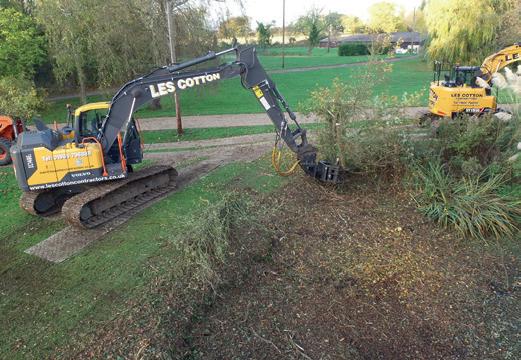

www.ascensotyresuk.co.uk on Bias tyres 5 year warranty on Farm Radial tyres 7year warranty For Ascenso Tyres in the UK, contact your local tyre dealer Trade enquiries: enquiries@ascensotyres.co.uk | 01205 743163 Tel: 01507 466352 Mobile: 07801 343023 Fax: 01507 462812 Email: ian@ianhoulgrave.com THE LARGEST FLEET OF CHALLENGER TRACKED TRACTORS IN EUROPE up to 600hp FOR HIRE IanHoulgraveIanHoulgrave FOR ALL DRAINAGE AND SEWAGE TREATMENT PLANT NEEDS Is your property off the main sewage network? Do you have a septic tank? If so, we can install a new sewage treatment plant and provide a maintenance service. As well as servicing existing treatment plants. Sewage Treatment Plant and Servicing Trimble RTK GPS Ditching, Hedging, Flailing Land drainage Supporting the NHS in East Anglia MARCH 2023 • ANGLIA FARMER 7
POULTRY
MUCK WANTED
WANTED:
Slurry supply, handling and injecting


• Up to 7m disc injector
• Dribble
discs
• Satellite navigation, field mapping and computerised weighing equipment
• Wide flotation-tyres for low ground pressure
• Fast loading with high capacity loading shovels
• Spreader hire also offered
• Up to 7m disc injector • Dribble bar application
• 28,000-litre capacity Joskin tanker
Muck and Lime/LimeX spreading and supply

• Wide low ground pressure flotation tyres and steering axles
• Tank agitator and high volume turbo filler
• Satellite navigation and field mapping



• Low odour operation, a clean and efficient service



• We can supply and deliver slurry, or inject your own


• Muck for straw deals also offered


• Fleet of modern high-capacity spreaders

• Up to 36m spread width with shredding augers and spreading discs
• Slurry doors and sludge equipment

• Satellite navigation, field mapping and computerised weighing equipment
• Wide flotation-tyres for low ground pressure
• Fast loading with high capacity loading shovels (7 cubic metre buckets)
• Reliable efficient service



• Spreader hire also offered
Larger quantities also available get in touch for a quotation.
We now offer a local tipper service allowing us to deliver our premium mulches, topsoils & peat free composts directly to your garden or allotment. To book in your tipper load or to get a quotation, contact us through our website or call us on 01953 525001.


8 ANGLIA FARMER • MARCH 2023 • Up to 7m disc injector • Dribble bar application • 18,000-litre capacity Joskin tanker • Wide low ground pressure flotation tyres and steering axles • Tank agitator and high volume turbo filler • Satellite navigation and field mapping • Low odour operation, a clean and efficient service • We can supply and deliver slurry, or inject your own 56125 SUGGITT
SERVICES Contact Steve on 07789 870979 | email ssuggitt76@gmail.com • Supplied & spread and contract spreading services available • Muck sales including poultry manure and compost • Muck for straw deals also offered • Fleet of modern high-capacity spreaders • Up to 36m spread width with shredding augers and spreading discs • Slurry doors and sludge equipment • Satellite navigation, field mapping and computerised weighing equipment • Wide flotation-tyres for low ground pressure • Fast loading with high capacity loading shovels (7 cubic metre buckets) • Reliable efficient service • Spreader hire also offered Slurry supply, handling and injecting Muck and Lime/LimeX spreading and supply Muck and Lime/LimeX spreading and supply Slurry supply, handling and injecting Contact Steve on 07789 870979 | email ssuggitt76@gmail.com • Supplied & spread and contract spreading services available • Muck sales including poultry manure and compost • Muck for straw deals also offered • Up to 24m spread width with shredding augers and spreading
FARM
odour operation,
We can supply and deliver slurry, or inject your own 56125 SUGGITT
SERVICES Contact Steve on 07789 870979 | email ssuggitt76@gmail.com Attleborough Norfolk
bar application • 18,000-litre capacity Joskin tanker • Wide low ground pressure flotation tyres and steering axles • Tank agitator and high volume turbo filler • Satellite navigation and field mapping • Low
a clean and efficient service •
FARM
• Supplied & spread and contract spreading services available • Muck sales including poultry manure and compost
AGRICULTURAL SHEDS TO PURCHASE FOR AGRICULTURAL STORAGE ACROSS NORFOLK & SUFFOLK
Arable
Yield Enhancement Network celebrates 10th anniversary
Two world record crops and the Innovator of the Year Award were celebrated at this year's Yield Enhancement Network (YEN) conference, held at Peterborough.
Almost 200 delegates attended the network's 10th anniversary event – including dozens of farmers who have seen yields and productivity increase since the YEN was established a decade ago to develop a new way of working for the industry.
Bringing together farmers, advisers, scientists and commercial organisations to learn by sharing, the YEN approach includes knowledge exchange, detailed crop post-mortems and benchmarking, explained network director and co-founder Roger Sylvester-Bradley.
It’s 10th harvest saw world record crops of winter wheat (17.96t/ha) and barley (16.2t/ha) grown on Tim Lamyman’s farm at Worlaby, Lincolnshire. The approach has proved so attractive that YENs have now been initiated in Canada and the USA.

The YEN Innovator of the Year Award was presented to Russ McKenzie of DJ Tebbit, Huntingdon, Cambridgeshire, for his commitment, innovative ideas, use of trials and analysis for yield enhancement.
Twin challenges
For the past 10 years, YEN has studied yields of wheat, barley, oats, oilseed rape, peas beans and recently linseed. It has also recently ventured to enhance nutritional efficiency (YEN Nutrition) and reduce carbon intensities of cropping (YEN Zero).
The UK-based YEN has now accumulated over 5,000 crop yields with over a million explanatory data items. This puts the YEN in a unique position to analyse the complexities of meeting the urgent twin challenges of raising farm productivity in the UK and ensuring its sustainability.
The YEN has been supported and funded almost entirely by the industry itself through efforts of farmers and their advisors, sponsorship from their support industry and levies – enabling scientists to organise the reports, col-
could still produce such high yields.
Sharing lessons
For the first time, this year many farms managed to exceed their maximum theoretical potential yields – despite a difficult season by ongoing lack of rain and record-breaking high temperatures during the summer.
Prof Sylvester-Bradley said: “Either the farms are not understanding how good their soils are, or our science is too pessimistic about how good our potential yields are.”
Either way, 2022 had been a good year for sharing lessons about yield prospects in the UK, he added.
Speaking at the conference, ADAS crop physiologist Pete Berry said one of the main lessons was the “farm factor” – the extent to which farms differ. High-performing farms monitored their performance and paid attention to detail – characteristics other farms could also adopt.
The YEN encourages farmers to share data to benchmark their crop performance against peers, enabling insights to be gained and shared by the community. In turn, this enables growers and scientists to work togeth-
er to improve yields.
ADAS crop physiologist Sarah Kendall said: “Attention now turns to how YEN develops into the future.
“We want to ensure it remains relevant and allows members to use the approach at the whole farm as well as field level.
“Identifying the funding mechanisms to achieve this will be vital.”
For more on record-breaking cereal yields, see page 16.
HARVEST 2022 RESULTS
Best wheat, rye or triticale yield
Gold: 17.96t/ha – Tim Lamyman, Lincolnshire, supported by Frontier Silver: 16.7t/ha – Mark Stubbs, Lincolnshire, sponsored by Hutchinsons
Bronze: 16.1t/ha – Vagn Lundsteen, Zealand, Denmark, independent entry
Best % of potential wheat, rye or triticale yield
Gold: Ashley Jones, Cornwall, sponsored by Limagrain 132% of 11.7t/ha
Silver: Mark Stubbs, Lincolnshire, sponsored by Hutchinsons 116% of 14.4t/ha
Bronze: James Loder-Symonds, Kent, sponsored by Bayer 106% of 12.2t/ha
Milling wheat protein yield & baking quality awards, sponsored by UK Flour Millers
Gold: Chris Eglington, Norfolk, sponsored by AHDB
Silver: Paul Cornwell, Suffolk, independent entry
Bronze: Richard Budd, Kent, sponsored by BASF
MARCH 2023 • ANGLIA FARMER 9
“
High performers pay attention to detail
New world record: Tim Lamyman's 17.96t/ha crop of winter wheat
Tackling rust risk is best managed early says expert

• Different conditions to last season
• Challenge once rust builds in crops
• Wider application window can work
Wheat growers are being urged to assess disease risk and protect crops to avoid compromising yield potential or stoking problems later in the season.
The first T0 fungicide is often where some growers look to make savings. But this could be false economy if yellow rust pressure is high, suggests a trial last season by Hutchinsons and BASF at Terrington, Norfolk.
The trial compared a full programme (T1-T3) with and without a metconazole-based T0. It found that a T0 applied to KWS Kinetic – rated 4 for yellow rust – under significant disease pressure could generate a 1.5t/ha yield uplift.
“Considering the historical average yield response from a T0 is nearer 0.1t/ ha, the Terrington result is unexpected,” says David Howard, head of integrated crop management.
“But it highlights the variability that long-term averages can mask –and how challenging rust management can be once it builds in crops.”
High risk
Last season was particularly high risk for yellow rust, acknowledges Mr Howard. This was due to a mild winter and monthly temperatures about 2°C above average from January onwards.
Weather data shows most areas experienced 70-80 days between January and July where temperatures were optimal for yellow rust (10-15°C).
“Under such conditions, disease cycles faster, multiplies and reinfects crops more rapidly, keeping pressure high, resulting in clear benefits from reducing inoculum early.”
This was highlighted clearly in the Terrington trial, with less disease infection on all the main leaves, culminating in 8-10% less yellow rust on the flag leaf after a T0 was applied.
Growers should avoid
Conditions so far this season have been somewhat different to 2021/22, with cold weather during December and January reducing the yellow rust risk by killing pustules and infected lower leaves.

Research shows frosts below -5°C will affect dormant mycelium. A large area of relatively early-sown wheat last autumn may further help to counter yellow rust risk.
But growers should maintain their guard, adds Mr Howard.
“Changing pathogens and increasingly un-
predictable weather strengthen the case for T0 sprays to become standard for early disease – and expecially
Lincolnshire-based Farmacy agronomist Charles Wright agrees.
“Rust pressure has been generally lower than last year, but don’t get complacent. Relative yellow rust risk is increasing in the UK because of the weather patterns we’re having, so saying it’s lower risk now is somewhat different to
Continued on page 12
Arable 10 ANGLIA FARMER • MARCH 2023
Yellow rust on the first leaf of a winter wheat plant
complacency, says agronomist Charles Wright (below)
Think different, farm better

Physiological starter fertiliser


• Provides soluble phosphorus readily available for plant uptake

• Increases absorption of nutrients and mineral elements
• Stimulates root growth and development early on For
more information, visit
Arable
Continued from page 10
10 years ago.”
Many popular varieties are susceptible to yellow rust. They includei Skyfall (rated 3), KWS Zyatt (3), and Gleam (5). But even varieties with higher AHDB Recommended List scores, such as KWS Extase (8) and KWS Dawsum (9), should be managed carefully because previous seasons have shown the potential of new races to overcome genetic resistance.
Later-sown crops, such as those after roots or vegetables, or where drilling was delayed due to blackgrass management, may be at greater risk of yellow rust, says Mr Writght.
“We need to be proactive about managing the disease.”

Application timing

Traditionally, many growers target growth stage 30 for applying a T0 spray. But Mr Howard says there is greater flexibility with a slightly wider application window of Growth Stage 25-30 where pressure is high.
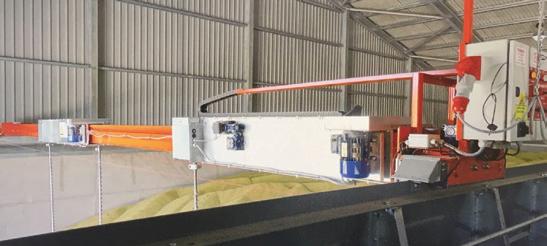
This reduces the chances of weather delays rolling T0 sprays into the T1 slot. It also provides the much-needed treatment gap to reduce inoculum





pressure – and allow T1 sprays to be more protective and less curative.



Metconazole or tebuconazole-based products are preferred where rust needs rapidly knocking out, while strobilurins, such as azoxystrobin or pyraclostrobin, offer longer-lasting protection, but less curative activity.
Susceptible varieties
In the most susceptible varieties, where risk is very high or yellow rust has become established over winter, there may be a need for a fungicide before the main T0 (from post-tillering, GS 20+).
But Mr Wright says growers should check with their agronomist because only a limited range of products can be used at this early timing.
He favours a straight tebuconazole pre-T0, allowing the true T0 to be applied at GS 30. Again, this will help maintain a tight 2.5-3 week interval between the T0 and T1 treatments.
“The keys to rust management are to not let it get established, and keep the intervals between active fungicides tight.”
While yellow rust is the focus of most T0 programmes, early-sown
wheats high biomass will be at greater risk of Septoria, so this should not be overlooked at T0, especially in more susceptible varieties or regions.
“Some growers may have turned away from using T0s to manage Septoria after chlorothalonil’s withdrawal, but there are benefits from keeping Septoria in check and buying flexibility towards T1,” says Mr Howard.
Metconazole has some Septoria activity, although folpet offers greater protection, he says.
Don’t overlook Septoria
“Avoid primary azoles as they are likely to feature in later fungicide applications. Generally, rainfall in April and May really drives Septoria pressure, but early drilled crops with more biomass are at greater risk.
“For growers trying to be proactive against Septoria at T0, then the multisite folpet is probably my preferred option, as you’re hopefully protecting some of the new growth from getting Septoria.
“With high input prices and still decent commodity prices, any element of risk management you can bring into the situation is worthwhile.”
Thomas Scott Seating






12 ANGLIA FARMER • MARCH 2023
Under these conditions, disease cycles faster
“
Call 01236 421835 e: info@drivers-seats.com www.drivers-seats.com Forklift seats and seat spares for all types. Full stock of GRAMMER seats and spare parts in stock. KAB SCIOX tractor seats. Full range of economy tractor seats.
Seat
Truck seats from GRAMMER, KAB and ISRI.
repairs, covers and spare parts for all ranges.
Celebrating 96 years in business 1924-2020 PELLCROFT www.pellcroft.com sales@pellcroft.com 01526 342466 Manufacturers of centrifugal, low volume and portable fans, air tunnels, drive over floors, grain stirrers and gas burners.





Future proofing your Cereal Disease Control Effective against septoria in wheat and rhynchosporium and ramularia in barley ARIZONA The essential multi-site fungicide ARIZONA MSI Pr Visit www.adama.com/uk ADAMA Agricultural Solutions UK Ltd. Third Floor East, 1410 Arlington Business Park, Theale, Reading RG7 4SA Telephone 01635 860 555 UKenquiries@adama.com ARIZONA® is a registered trademarks of the ADAMA group. Always read the label and product information before use. For further product information, including warning phrases and symbols, refer to www.adama.com/uk or call The Technical Helpline on 01635 876 622. (500g/L folpet) ARIZON
‘Power-up’ weed control to boost sugar beet crops

• Higher beet price justifies investment

• Consider co-formulated applications
• Target wider range of problem weeds

An effective weed control programme is likely to pay dividends on sugar beet this spring – with the crop worth significantly more money this year.

Sugar beet prices are up to 50% higher than last year for growers who are willing to commit to producing a crop in 2023 and 2024 – and a well-considered programme is likely to deliver a decent yield response.
There is scope for growers to secure a 10-20% yield increase in well

managed sugar beet crops compared to fields where weed control is below par, says Adama herbicide technical specialist Bill Lankford.
“In recent years, sugar beet growers have predominantly relied on phenmedipham based herbicides to control the majority of weeds,” he says.
Control strategy
But relying on a single key active ingredient is unlikely to provide complete control where weed flora has di
Arable
TURN POPLAR AND ASH INTO CASH Don’t let timber quality deteriorateSafely harvest while it has value! • ash and poplar dismantling and purchase • hedge and woodland coppicing • site clearance • felling licence applications • contract chipping • supplier of dried and screened woodchip m: 07850 988808 e: info@collinsfarmingandforestry.co.uk w: www.collinsfarmingandforestry.co.uk 14 ANGLIA FARMER • MARCH 2023
versified due to changes in agricultural practices and legislation has forced a move to less effective suspension concentrate formulations.


A wider array of products should therefore be used alongside phenmedipham, says Dr Lankford. Against key yield-robbing weed species, this includes actives such as metamitron, quinmerac, ethofumesate, clopyralid, dimethenamid-p and propaquizafop.


“The easiest active to incorporate into programmes is metamitron thanks to its broad label, good crop safety and dual contact and residual activity. It also partners well with quinmerac which delivers added efficacy, especially in dry conditions thanks to its useful water solubility.”
Robust approach
Dr Lankford says adding metamitron and quinmerac enables growers to ‘power-up’ their current herbicide strategies by targeting a wider range of target weeds including cleavers, bindweed, black nightshade, fool’s parsley and common field speedwell.

“Including additional active ingredients into the tank mix doesn’t come for free, but growers can be assured
that products such as Goltix (metamitron 700 g/L) and Goltix Titan (metamitron 525 g/L and quinmerac 40 g/L) will pay for themselves.”
A robust programme of early season weed control – either as pre-emergence or early post-emergence treat-

ments – will boost crop yields and can help growers manage workloads by giving some flexibility in terms of application timings.
“Active ingredients such as quinmerac aren’t cheap. But where the weed burden is high and includes difficult to control species, its addition is more than worth it, especially when sugar beet prices are so buoyant.”
Easy-to-use
Adama developed its PowerTwin co-formulation of phenmedipham (200 g/l) and ethofumesate (200 g/l) for farmers who want an easy-to-use formulation of these two actives to tackle a range of weeds.
“Its combination of a residual and a contact herbicide, and compatibility with six common adjuvants makes PowerTwin easy to incorporate into weed programmes, with growers able to adjust the rate of application according to their specific weed burden.
“We’re also in the process of bringing a straight ethofumesate product which has a higher individual dose to the market so that growers can control established weeds more effectively at the post-emergence timing.”

Good weed
will
later
control now
pay dividends
01603 858773 www.ghrdriveways.co.uk TAR BONDED GRAVEL • By far, the most cost-effective surfacing technique • This method has been proved all over the world for hundreds of years • All natural stone used, giving it a natural look • Heritage listed buildings • Farm roads • Small holdings • Car parks • Pathways SHOWHOMES WANTED! MARCH 2023 • ANGLIA FARMER 15
Growers could secure a decent yield increase, says Bill Lankford
New world record wheat crop grown in Lincolnshire
•
Bumper wheat yield reaches new level
• Revealed: Teamwork is behind success
•
Still 'more to come' from plant breeder
Awinter wheat crop which yielded almost 18t/ha has been confirmed as a world record.
Grown by Lincolnshire farmer Tim Lamyman, the 17.96t/ha crop of DSV Champion wheat beat the existing 17.40t/ha world record achieved in New Zealand in 2020 – and was very much the result of a team effort, he says.
Mr Lamyman and son Robert first grew Champion in 2020. Drilled too thinly, it achieved only 83 plants/m2 at establishment. But the crop still produced up to 20 tillers/plant achieving a yield of 15t/ha at harvest 2021.
"We knew the potential was there –especially with the special agronomic programme developed by Frontier and BASF and the Bionature nutrition we used for the crop,” says Mr Lamyman.
The team decided Champion possessed the high yield traits to push UK wheat yields to new boundaries – and stuck with the variety for harvest 2022, says Mr Lamyman.
Clear potential
DSV Champion breeder Matt Kerton says the variety's potential was clear early in its development. The breeding process started in 2012 and its yield potential was evident as soon as trials began in 2016.
"As the selection process continued, its exceptional disease resistance package and versatility were also increasingly in evidence.
The variety performed well in a range of growing situations, including early or late drilling and on heavy or light soils, says Mr Kerton. It is this combination of high outright yield, flexibility and strong agronomics that has made it so popular, he adds.
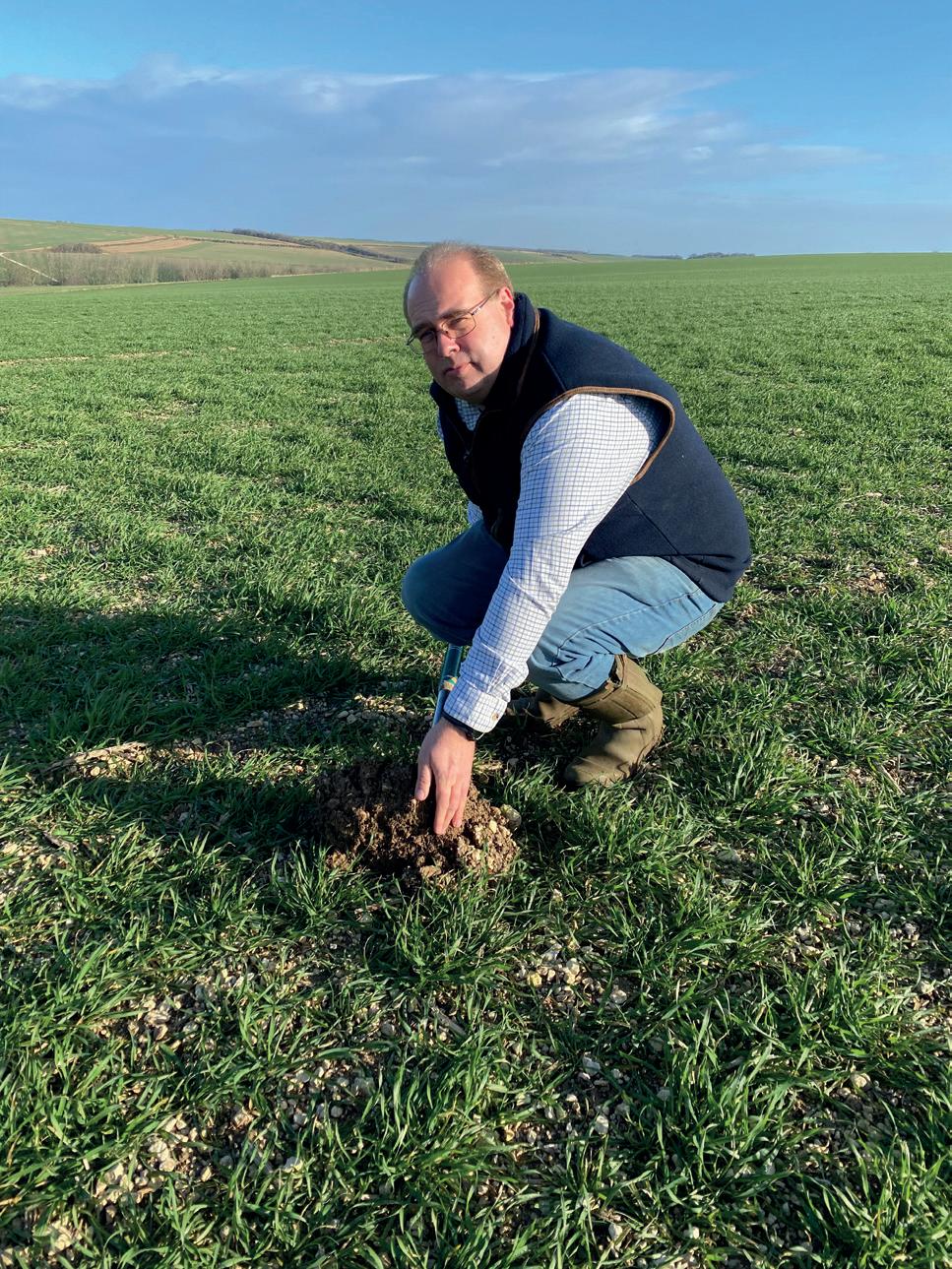
"It's great to see DSV Champion do so well in growers' fields as well as taking the world record for yield.
"But it's very much a team effort with key players such as Michael Koch in our molecular laboratory, Graham
moisture is in the ground at the time of the first application.
"Due to the last three springs being dryer than average, we have applied three or four even splits of nitrogen but this changes back to five even splits if we are experiencing a wetter than average spring."
The record-breaking crop received 310.5kg N/ha of bagged nitrogen split in three equal applications. By applying Bionature Delta K to activate the root structures and TipTop, total applied nitrogen came to 314kg N/ha.
"The Bionature smart nutrition program was specifically tailored to the Champion because it is such a high tillering and high biomass variety with an almost unique ability to still pro-
"It has been fantastic working with a team, who have all helped achieve these fantastic yields.
"I have to give a special thank you to my hard-working farm – Andy McClung, David Marwood, Sarah, Robert and Emma Lamyman – and also Ed Smith, from A.W Smiths and Sons for putting up with us running over their weighbridge all the time.
The technical team also helped pushed the sheer yield ability of DSV Champion into the record books.
“We must thank Jeremy Nicolson, Ben Meade, David Robinson and Paul Fogg from Frontier, Andrew Smooker from BASF, Mark Carter and Tom Robinson from Bionature UK, and Barnaby Pratchett from GFP."
16 ANGLIA FARMER • MARCH 2023 Arable
Tim Lamyman with his worldbeating crop of DSV Champion wheat during establishment
It's been an exciting journey
“




MARCH 2023 • ANGLIA FARMER 17 Anglia & Midland Farmer Ad - Grain Store - 210x148 Half Page Dec 22.indd 1 06/12/2022 11:50:21
How special urea outperforms ammonium nitrate fertilisers
Urease inhibitor boosts efficiency
Crops treated with a urease inhibitor fertiliser are using nitrogen more efficiently, suggest trials by farm management company Velcourt and Cofco International.
BASF's Limus-protected urea includes a urease inhibitor that improves nitrogen use efficiency by reducing volatilisation – helping to ensure more nitrogen is available to the crop.
The trials suggest applications of Limus-protected urea significantly im prove nitrogen recovery and nitrogen use efficiency compared to applications of ordinary ammonium nitrate (AN).
As well as a cost benefit over AN, the results show Limus-protected urea is the most effective means of getting vital nitrogen into crops this spring, says Cofco International UK fertiliser manager Russell Davison.

"It's a very challenging time for UK growers at the moment, not just be cause of the rise in fertiliser prices gen erally but also because of the shortage of AN and AN-based products in the market, be they imported or produced domestically.”

Mid-February prices were about £560/t for AN and £540/t for straight urea. But Mr Davison says the price differential is even greater because AN contains 33.5-34.5% nitrogen and urea is 46% nitrogen.
"The challenge with urea is man aging potential loss of nitrogen to the atmosphere particularly when appli cations are in unfavourable conditions.
"This is highlighted by the Clean
Air Strategy which will limit the times at which uninhibited urea can be used to between 15 January and March with measures to reduce the negative effects of ammonia pollution on the environment and human health.”
Dual-action
Protected ureas offer a viable alternative to AN with the addition of a urease





two specific urease inhibitors – enabling it to reduce ammonia emissions more effectively than products containing a single inhibitor.”
Ammonia emissions can be reduced by up to 98% over straight urea, adds Mr Davison.
"The treatment adds around £40£50/t to the urea cost but the benefits are immense. Adding this to the £560/t cost of urea takes it to £600-610/t which is still significantly lower than AN on a cost of nitrogen basis.
Continued on page 20
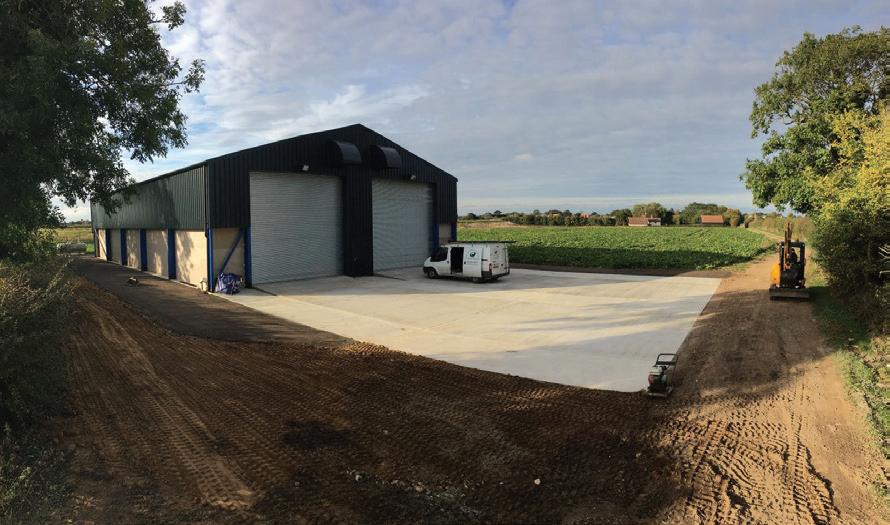
Arable
More nitrogen is available to the crop Grain storage and handling Steel framed buildings Groundworks All types of concrete Turnkey projects Phone: 01379 678459 Email: info@jhvaudrey.co.uk www.jhvaudrey.co.uk
Vaudrey
JH
& Son Ltd
Crop drying, ventilation and storage systems specialists.


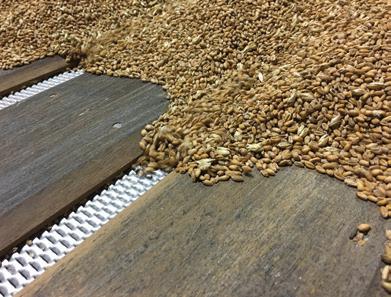





Flach
Email:
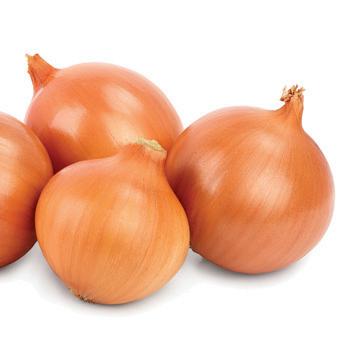
& Le-Roy Ltd is an industry leader in designing and delivering high performance drying, ventilation & storage systems.
have been supplying top quality drive-on and box store drying and storage installations to the arable farming industry globally for over 27 years and our business is continuing to grow. Drive-on Floor Systems • Letter Box Duct Systems • Control Systems Centrifugal & Axial-Flow Fans • Gas Burners • Walling Systems
01480 495956
07774 141512
We
Telephone:
Mobile:
enquiries@flruk.com
www.flr-cropdrying.com 10 year Guarantee Manufactured in England Flach & Le-Roy Ltd
years experience in the industry “Drive on Dry off
systems
Website:
35
”
Arable


Continued from page 18
ly attractive alternative to the treat ed urea."
Nick Anderson, head of crop tech nology at Velcourt, says the big ques tion is whether Limus is as effective as AN at getting nitrogen into crops –and that is where the trials are shed ding some interesting light.


Standard approach
"It's fair to say the standard approach to describing inhibited ureas in the past has been that they probably al low urea to perform as well as AN in the field, but our results from 2022 showed Limus-treated urea performing slight ly better than AN.
"Aggregated results from two sites –one with heavy moisture retentive soil and the other on lighter droughty land near Stamford, in Lincolnshire – show Limus-treated urea delivers an aver age 3.4% increase in nitrogen recov ery compared to AN in winter wheat.

"These take into account both im provements in yield and protein con tent of the grain. Statistical analy sis allows us to say with more than 99% confidence that the crops recov ered more Nitrogen where this was ap
years experience in the roller shutter industry call us anytime for a competitive price.


on average at least as well as AN and in some cases it will be better. There were clear advantages on both light and heavy soils."
The nitrogen recovery seen in the Velcourt trials is similar to that seen in BASF's own worldwide trials programme, which further validates the findings, adds Mr Anderson.
"I think there's growing confidence that the sort of advantages we are seeing for Limus are credible and consistent and there's a real opportunity for growers to take advantage of this."
Cost benefits
Mr Anderson suggests a 7:1 breakeven ratio for most people with AN now and around 5:1 for Limus-treated urea – a significant difference which represents a sizeable cost benefit for Limus over AN, he adds.
"Plus, of course, it is widely reported that the carbon footprint of urea as an N source is much lower than that of AN, particularly imported AN.
"However you look at it, there are now strong arguments for switching from AN to this type of treated urea." All prices in this article are correct at the time of writing)



t: 01353 725 151 e: david@russellmillarltd.co.uk
STEEL ROLLER SHUTTER DOORS METRAC H75 • Stage 5 Perkins engine • Four steering modes for soil protection & stability • Super quiet comfort cab • All round versatility Simon Richard Ltd, Crown Tailrig, Bonchester Bridge, Hawick, TD9 8RA Tel: 01450 860774 Fax: 01450 860772 mail@simon-richard.co.uk www.slopemower.co.uk The universal machine for all seasons 20 ANGLIA FARMER • MARCH 2023
Nick Anderson, head of crop technology at Velcourt (left) and Cofco International UK fertiliser manager Russell Davison


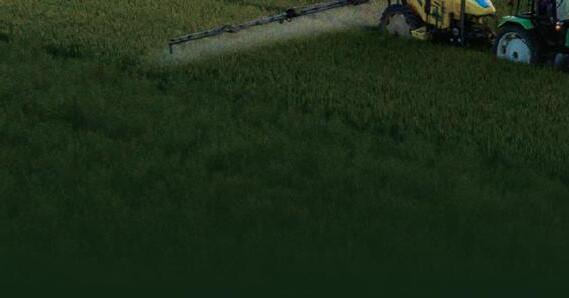





Mark Weatherhead Ltd












Telephone: 01954 210 355

Mobile: 07885 202 005
Hardwick, Cambs CB23 7QL

Mob: 07944 620339 Office: 01473 240429 fjmetals@btinternet.com www.fjmetals.co.uk BEST PRICE PAID FOR ALL SCRAP FARM MACHINERY Plant, silos, tanks, combines, tin wire, batteries, irrigation pipes etc Prompt dismantle & collection service Enviro regd merchant • Grain drying and storage • Groundworks and drainage • Electrical engineering works • Elevator/conveyor repairs
Steel Portal Framed Grain Drying and Storage Ground works and Drainage Electrical Engineering Royston Tel : www.markweatherhead.co.uk Existing building conversions 22 ANGLIA FARMER • MARCH 2023
steps to spring barley success 6
Ron Granger of Limagrain outlines six ways to get the best from spring barley this season.
Market requirements influence many agro nomic decisions, particularly nitrogen strat egy, so it is essential growers are clear about the criteria that must be met.
Depending on locality and opportunities for selling to different end users or export markets, the barley crop you grow – and the agronomic inputs required – will be determined by the sector you target.
This is particularly true for growers who must hit a certain grain nitrogen percentage to achieve a premium. Distilling requires 1.65% nitrogen or lower, brewing 1.65-1.85%, and grain distilling at 1.85%+. Grain nitrogen is not a concern for animal feed.
with continued plant growth. We saw the value of earlier drilling in spring 2022, with most growers drilling earlier than usual.
Along with upfront nutrition before the drought hit, early drilling was certainly one reason why growers achieved higher yields than originally anticipated.
population should be around 775 ears/m².
In 2019, higher yield potential was achieved from higher final ear counts, approaching 800/m² by harvest. An 8-9 t/ha crop needs around 800 ears/m², which at a 350 seeds/m² rate, equates to around 2.5-3 tillers per plant at harvest.
But experience shows optimal tiller and ear counts may be underachieved in many situations, meaning crops fall short of achieving their full yield potential. The biggest issue is often the weather.
Traditionally, spring barley was often seen as a lower input crop, with growers reluctant to increase nitrogen rates in fear of exceeding maltsters' grain nitrogen limits. But trials over many seasons indicate that higher nitrogen rates can be beneficial.
Half of all growers typically sow spring barley at 300-350 seeds/m², with most targeting a yield of 8t/ha. This is about right when drilling into good conditions, but seed rates must be tailored to individual situations.
Comparing performance over various seasons and regions suggests the optimum seed rate is 350 seeds/m² when a vigorous, higher tillering variety such as LG Diablo is drilled into ideal conditions in mid-March.
This should be adjusted up or down depending on weather, seedbed, soil moisture, drilling date, and site experience. Late-sown crops inevitably produce fewer tillers and therefore fewer ears, which must be compensated for by increasing seed rate.
A lower rate of 300-325 seeds/m² could suffice if drilling into an “onion bed” in March. But it may be appropriate to push rates to 400- 450 seeds/m² achieve target ear numbers and a competitive crop in a blackgrass situation when forced to drill into April.
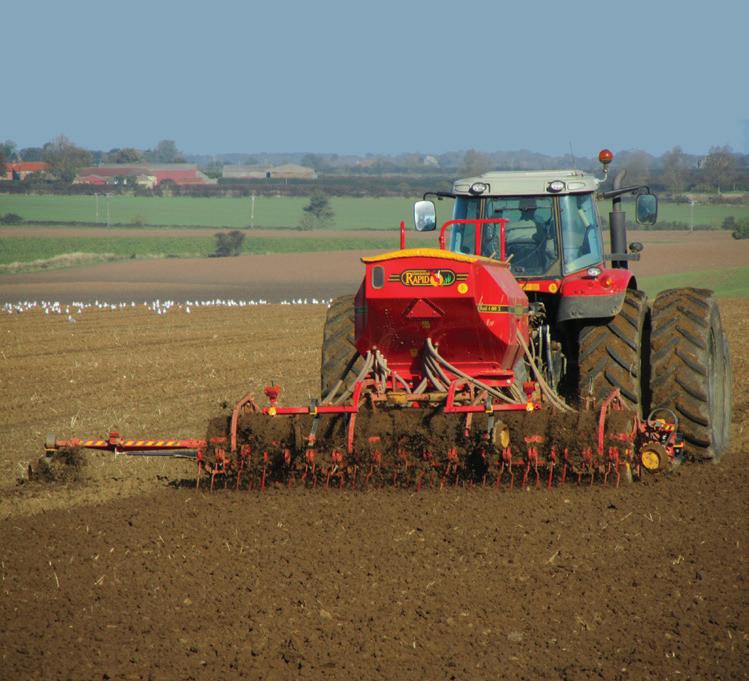

In the trials, a standard seedbed application of 120kg N/ha was compared to a split application of 150kg N/ha, with the additional 30kg at late tillering. This resulted in a yield benefit of 0.4-0.5t/ha over a single dose, with little or no impact on grain nitrogen.
6 Optimise other nutrients
Optimising macronutrients, such as phosphate, potash, magnesium and sulphur, is beneficial to tiller retention and yield.
These should be applied in the seedbed or soon after drilling to promote strong rooting and early plant growth. Tissue analysis of a young growing crop can identify any shortfalls in nutrition before visible symptoms appear. It is a relatively inexpensive way of targeting a high yielding crop.
Many variety choices are also determined by the end market or contract chosen.
But for those still to decide what to grow, consider a dual use variety, such as LG Diablo. It has good yield performance, with several end market opportunities.
Newer recommended varieties certainly offer higher yield potential, and if contracts are offered, then they are certainly worth considering. Dual use varieties offer growers flexibility for the distilling, brewing and feed market sectors.
5
Earlier drilling improves yield potential. But this is often only possible on lighter, free-draining land. It can significantly increase disease risk, so consider more disease resistant varieties for this situation.
Patience is required for the right window of opportunity, when both weather and soil conditions allow good seedbed creation.
Rising soil and air temperatures will help ensure rapid emergence and establishment,
Applied at the stem extension phase into flowering, additional micronutrients such as manganese, zinc, copper, iron, and boron, are also useful. Consider early growth regulator applications on crops to promote rooting and strong uniform tillering.
Arable
1 Understand the market
Choose the right variety
Wait for good conditions
Optimise seed rate
2
3
4
Maintain tiller numbers
MARCH 2023 • ANGLIA FARMER 23
Trials help farmers grow more from less
•
Cereal varieties tested for efficiency
• Different nitrogen strategies assessed
• Results reveal best fertiliser strategy
Growers are optimising crop performance thanks to trials which assessed the nitrogen use efficiency of new new cereal varieties.
Plant breeder Elsoms began work in 2020 on a series of new trials aimed at screening all their candidate varieties and near market lines for nitrogen efficiency as part of its “grow more for less” strategy. The results are now bearing fruit.
The aim was discover how different varieties respond to different nitrogen application rates and timings, says technical manager George Goodwin. The goal was to reduce nitrogen inputs as much as possible without seeing drastic differences in either yield or quality.

“This not only tells us which of our varieties are the most nitrogen efficient but – just as importantly – why they are more efficient, enabling us to isolate those positive genetic traits for use in future cross-breeding,” says Mr Goodwin.
The trials benefit growers because Elsoms can offer specific husbandry advice when a new variety becomes commercialised – helping to reduce expenditure on nitrogen by reducing
Environmental concerns about over-applying nitrogen were behind the first trials, he adds. But the war in Ukraine and resulting spike in nitro gen costs have since created a compel ling economic case for the research too.
Game changer
Andrew Creasy, UK cereal product manager for Elsoms partner Saaten Union says the trials are a potential game changer for growers looking to improve their farm’s sustainability, en hance crop performance and potential ly reduce their overall input costs.
“Over the last three years, we’ve annually assessed 10 different win ter wheat varieties – including three controls – across four different nitro gen regimes. Applications ranged from no nitrogen at all to 200kg applied in three splits.
“Trials were replicated twice each year, on heavy soils at our Cowlinge trial site, and then on lighter soils at our site near Bury St. Edmunds in Suf folk to give us the widest performance comparison across different soil types,” says Mr Creasy.
“While important to highlight that this research is ongoing, several impor-
Farmers are benefiting from the results, says Andrew Creasy
Trials have been conducted in Suffolk for the past three years (below)
when 200kg was applied in three applications.
“Given the recent predominance of dry spring and summer weather, it is clear that much of the late applied nitrogen is not getting into the plants due to a lack of soil moisture.
Weather conditions
“But there’s also enough evidence in the data to suggest that varieties with German and French parentage perform much better when nitrogen is front-loaded – regardless of weather conditions – given that not every year was consistently dry between 2020 and 2022.
The 2021 trials also provided an insight into optimising yields from Group 2 milling wheat Mayflower. When 85kg of N was applied early, Mayflower out-yielded a competitor variety – even though there was no difference when both varieties received 150kg in two early splits.

“Taking varieties out of their comfort zone to find their optimum level of N for yield and quality is a significant step forward when looking to develop new varieties that are able to express the same use efficiency characteristics,” says Mr Creasy.
“Our objective now is to pass this key husbandry advice on to agronomists and growers to support them in their variety decision making process.”
24 ANGLIA FARMER • MARCH 2023 Arable
New sprays protect crops without breaking the bank
Two new herbicides to combat broad-leaved weeds in arable crops have been launched by manufacturer Life Scientific.
Water-soluble granule formulation Laya contains 200g/kg metsulfuron-methyl. A reverse-engineered version of Ally SX , it can be used for spring-applied broad-leaved weed control in wheat, barley, oats and triticale.
The other herbicide is Leash. It contains 200g clopyralid and is a reverse-engineered version of Dow Shield. Leash can be used for controlling perennial and annual broad-leaved weeds on a range of crops.
Full of promise
Life Scientific specialises in reverse engineered products which are accepted by the regulator as the same as the reference product. This means off-patent products are brought to market more quickly than previously possible.

Autumn sown crops are looking full of promise due to rapid crop development brought about by mild weather and good soil conditions, says
Ruth Stanley, Life Scientific manager for the UK and Ireland.

But the mild conditions also meant there was a limited window to flush weeds through in stale seed beds. There was less opportunity to control weeds in the autumn, putting more pressure on control in the spring, says Ms Stanley.
“Well-timed herbicides will be important this spring – and success requires applying prod ucts early to small, growing weeds, which will more easily take up actives and are less able to detoxify them than larger weeds.”

Laya is approved for spring-applied broadleaved weed control in wheat, barley, oats, triti cale and on land temporarily out of production. For winter cereals, applications must only be made after 15 March and before the specified latest time of application.
Leash is approved for sugar beet, oilseed rape and cereals – and other important UK crops, but Ms Stanley advises checking the label as not all the crops have approval for the same tim ing, or individual or maximum dose.
GIBSON’S SEEDS
Autumn 2023 Varieties KWS Zyatt, KWS Extase, KWS Palladium, KWS Brium, DSV Champion, KWS Dawsum, KWS Cranium, LG Skyscraper Winter Beans - Vespa, Spring Wheat – KWS Ladum, Peas – KWS Manager, Spring Beans – Lynx
Suppliers of certified seed throughout East Anglia Seed cleaning and dressing undertaken


MARCH 2023 • ANGLIA FARMER 25
Call us on 01284 747292 or email admin@4xtrahands.com Farm Recruitment Looking for staff? Looking for a job? 4Xtrahands.com Tel:01455891929 MI DBusinessCentre/SapcoteRd,Burbage,Hinckley LE102AU www.multiindustrialdoors.co.uk sales@multiindustrialdoors.co.uk •GalvanisedRollerShutters •PlastisolColourCoatedRollerShutters •InsulatedRollerShutters •SectionalOverheadDoors •Steel10PointLockingSecurity/PersonnelDoor •Steel Fire Exit Doors •Fast Acting High Speed Doors •Dock Leveller/Loading Bay Installations •PVC Strip Curtains •and many more products Na ti on w id e Serv ic e INDUSTRIAL DOOR Specialists Manufacture • Service • Installation R A
Bell
E: office@ragibson.co.uk W: www.ragibson.co.uk
Gibson (Colesden) Ltd
Farm, Colesden, Bedford. T: 01234 376 284
SEED GROWERS, PROCESSORS
MERCHANTS
&
868 138
Grain Handling & Milling Systems
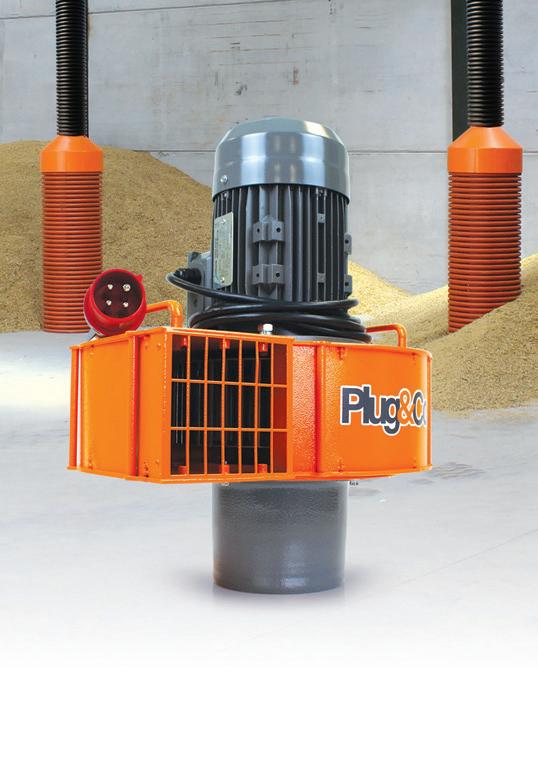
• Manufacturers of steel framed building, grain stores, livestock buildings general purpose building and commercial building
• All building designed in house to EN1090-2, and erected with our own employed staff




• Grain drying and handling systems supplied and installed




All buildings constructed CE marked DIN1090

26 ANGLIA FARMER • MARCH 2023 ANGLIA WASTE COLLECTION For more information please call Katherine Smith – 07590 850307 Tom Smith – 07801 416942 (Fertiliser and seed bags, all
& types of spray containers & cardboard collected off farm). Collections over East Anglia, further afield on request. FARM WASTE PLASTICS RECYCLING
sizes
LOWER OAKLEY, DISS, NORFOLK IP21 4AQ 01621
sales@plugandcool.co.uk
www.plugandcool.co.uk Huge
• All ground and civils works under taken to provide a turnkey project All groundworks undertaken Tel: 01692 535444 / 07717 478196 E: andrew@mconstructionservices.co.uk W: www.mconstructionservices.co.uk Next-Day Delivery Unbeatable Prices Unrivalled Quality
|
Stock
Big interest in high protein combinable green pea variety
• Highest protein of new green peas
• Meets increased market demand
• Strong yields and good agronomy
Rising demand for vegetable-based proteins and the benefits legumes bring to rotations is underpinning increased interest in combinable peas.
With the highest protein content of all new green pea varieties on the PGRO descriptive list for 2023, KWS Gotham looks set to bring growers substantive management and marketing opportunities, says the plant breeder's Kate Cobbold.


"We've seen significant growth in the area put down to peas in recent years but the rising costs of fertiliser over the last 18 months has added yet another compelling case for growing peas,” she says.
"Unlike most other arable options, peas don’t need expensive nitrogen fertiliser to maximise their production. As such, they offer growers a genuinely low-input spring crop.”
As well as fixing their own nitrogen, peas are a valuable break crop. They increase biodiversity, condition soil and open up a range of weed control options.
But Ms Cobbold says the most influential market driver now is the rapid growth in demand for pea-based protein for use in the food industry.
"Peas are a key protein source in a wide range of foods includ ing meat substitutes, ener gy bars, milks, yogurt, bat ters and ice cream. In some cases, pea protein is even replacing soya protein in more processed foods.
"It's been driven by a move to more vegetari an-type diets and pea protein is very much the first choice of fitness fa natics. Pea flour and pea-based snacks are also increasing ly available in the shops."
With demand for pea protein
rising, considerable interest is expect ed in KWS Gotham. The variety boasts a yield of 107% over controls. But the the real stand-out figure is 22.1% pro tein – exactly what growers and pro cessors are now looking for.
"Agronomically-speaking, it's a strong contender too, with resistance to pea wilt and a commendable 4 for downy mildew resistance,” says Ms Cobbold.
"A score of 3 for early ripening, a relatively short straw length of 86cm and a standing ability at harvest of 6 add to its in-field reliability and resil ience, while a thousand seed weight of 289g rounds off the package."
First choice
First choice varieties continue to be KWS green pea Mankato and yellow pea Manager, both of which remain staples of the industry. But Ms Cob bold says KWS Gotham looks like tak ing the game several stages on.
"Mankato’s consistency has made it a good choice for growers new to peas and it's been a top 25% performer in the PGRO descriptive list for several years. Much of this reliability is down to a near perfect combination of standing power and yield.
“There are probably varieties that
colour which it holds well.”
Manager is the latest yellow pea to hit the market from the successful KWS Momont pulse breeding programme, adds Ms Cobbold.
“It is a very high yielding variety nationally over a range of soil types and has a strong disease resistance package including resistance to pea wilt.
“Very short stiff straw means a safe harvest and this has helped Manager demonstrate consistently high yields compared to other varieties in trials over recent years – plus it consistently produces a large seed size.
“Both Mankato and Manager are going to be top performers for some time to come, but KWS Gotham represents a new style of pea variety that will undoubtedly form the basis of our commercial pipeline for several years to come.”
MARCH 2023 • ANGLIA FARMER 27 Arable
It's exactly what growers are looking for
“ Compelling case for growing peas, says Kate Cobbold (left)
Rapid growth in demand for peabased protein


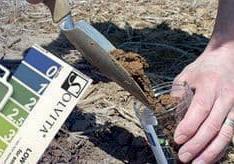












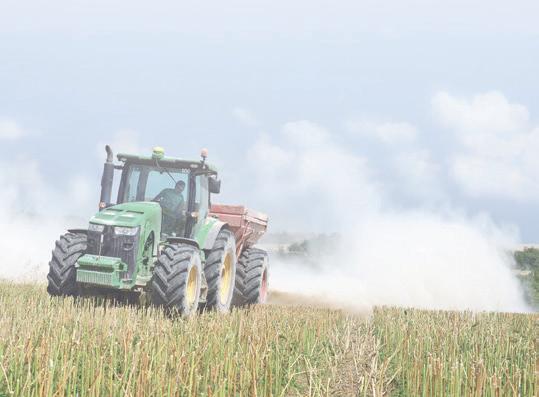


























































































01452 741112 www.agrisupplyservices.co.uk info@goldingham-contracts.co.uk Soil Health, Manure & Compost Testing Compaction Testers Nutrient Testing PH Meter DM-5 PAS100 compost soil improver supplied direct from our composting facility in Huntingdon, Cambridgeshire. For use as a soil conditioner on arable land or in horticulture and viticulture. l Cost effective fertiliser option l Rejuvenates tired soil
Provides slow release major & micro nutrients l Improves soil structure & rooting potential
Increases moisture retention & soil drainage l Good source of organic matter envar.co.uk Regenerating our Earth For prices call the team at our Cambridgeshire site on 01487 849840 or email enquiries@envar.co.uk Improve Soil Health PAS100 Compost 28 ANGLIA FARMER • MARCH 2023 The UK’s No.1 Liming Product Save £££’s on fertiliser this year with LimeX P2O5 - 9kg/t MgO - 8kg/t SO3 - 7kg/t this year with LimeXwww.limex.co.uk Customer service 0800 090 2376 LimeX is a business of British Sugar Scan for quote
l
l
Soil health
Fields leak carbon as drought threatens soil
• Lack of rain degrades fenland fields
• Big impact on vegetable production
• Concern for local farm businesses
Drought-hit fenland soils in Cambridgeshire are leaking 112 times as much carbon as nearby peat-free fields, says a study.
Lack of rain has dried out vegetable-growing fenland soils which are releasing on average 1344t of CO2 per km² per year, suggests an analysis of government data by the Energy and Climate Intelligence Unit (ECIU).

East Anglia remains in drought following lack of rain last year, according to the Environment Agency.The Fens are one of the UK's driest regions, receiving a similar rainfall amount of rainfall to parts of the Middle East.
Degradation
Dry peat soils release carbon to the atmosphere and are exposed to wind and rain. They are susceptible to being blown and washed away – degradation which means they are less able to store water when rain does fall.
Parts of the Fens may start to run out of water in as little as five years –
security is our soil. Supporting farmers to preserve their soils, plant trees and hedgerows to reduce erosion from wind and extreme rainfall will ultimately protect our yields.
Food security
"Rewarding farmers for ploughing less often or for growing crops that absorb nutrients from the atmosphere and return them to the soil are simple steps in the right direction."
To ensure UK food security in the face of climate change, Mr Williams says other parts of the country may have to grow vegetables.
"These are complex issues and more research is needed to understand the dynamics and the solutions.”
The government’s 25 Year Environment Plan for England set a target for all peat soils to be sustainably managed by 2030.
Announced in 2018, Defra's ELM scheme aims to encourage farmers to take measures that improve soil health.
The peat action plan for England established a Lowland Agricultural Peat Task Force to examine the challenges facing these soils.
Farmers are facing additional costs
Peatland grant scheme to reopen
Owners of English peatland will soon be able to apply to the third round of Defra's peatland restoration programme.
Grants of up to £2 million will fund up to 75% of the cost of capital projects which could restore hydrological function and peat-forming vegetation on peat soils at least 30cm deep and with at least 50% soil organic matter content.
The scheme is likely to be open for applications in April with an eightweek window, says Andrew Shirley, of rural business consultants Knight Frank. It is being administered by Natural England.
Damaged or mismanaged peatland is a significant source of greenhouse gas emissions. The Nature for Climate Peatland Grant Scheme aims to restore 35,000ha of degraded peat by March 2025.
Application process
Natural England is expected to prefer landscape-scale projects that work to restore the whole hydrological unit of a peatland – so each application is likely to involve a number of sites and landowners.
Landowners can normally apply for up to 75% of total project costs. In exceptional cases applications can be approved for up to 85% of the cost – but they must meet strict criteria.
Exceptional cases are defined as those which offer unique and significant environmental benefits that commonly-used restoration techniques could not achieve – for example, innovative techniques to reintroduce rare species.
They must also be applications from organisations or partnerships with constraints over their ability to secure other funding.
All restoration grant applicants must match at least 15% of the forecast funding for their project from a non-government source.
For further details and to attend a webinar about the scheme, email peatlandscheme@naturalengland. org.uk.
MARCH 2023 • ANGLIA FARMER 29
Soil is the bedrock of our food security
“
New test unlocks importance of carbon



Anew test claims to identify, measure and compare soil organic carbon content – helping farmers improve soil health and carbon sequestration.

Launched by Eurofins Agro UK, the test uses near-infrared spectroscopy to measure organic matter. This will help farmers to make more accurate decisions and reduce CO2 emissions by sequestering more carbon, says the company's Sophie Cath.

“For the first time, farmers can use accurate carbon data to chart soil health. This will help decide crop rotation, nitrogen fixing cover or break crops and the quantity of organic and non-organic fertilisers.”
The test provides data on how much carbon is sequestered in the soil, how much organic matter is stable or dynamic, what inputs can be used to improve the carbon sequestration potential of the soil, and how those inputs are likely to impact on the crop.”
ancing the amount of carbon, nitrogen, and other soil components.
“Understanding the carbon to nitrogen ratio is critical to soil stability because it helps to indicate what levels of nitrogen and other inputs are sustainable for the soil,” says Ms Cath.
The speed at which organic matter degrades determines the nutrients released to a crop. The higher the breakdown, the more nutrients are made available. The test captures this data which is then made available to farmers.
Results indicate what inputs will benefit the crop and what needs to be returned to the soil to improve carbon sequestration, says Ms Cath. The optimum level for a given crop can be better gauged by first understanding the active organic carbon content.
“We know that adding nitrogen stimulates growth. But the carbon to nitrogen ration is crucial to accurately evaluating the stability of organic matter and the speed it is broken down.
Soil health
Carbon is a
UREASE INHIBITOR NitroShield Protecting your nitrogen Improves Nitrogen Use Efficiency Reduces ammonia losses by 70%+ Contact us today 01526 396000 Visit www.omex.com Email agriculture@omex.com
Our trial farmer, Tim Lamyman in Lincolnshire, has achieved the following amazing results with the support of our products:





NH Delta is a technology that improves Nitrogen use efficiency (NUE) stabilising nitrogen in the optimal amine form NH2, altering plant growth habit through the moderation of auxins and promotion of cytokinins from root development to maximise the yield to plant biomass ratio maintaining healthy plant structure helping the reduction of environmental losses of bagged N.

Available in combination with essential elements Ca (+B) or K (+Mn). Delta provides nitrogen in an amine form ready for immediate plant assimilation and use, it requires only half the plant energy for root uptake compared to nitrates.






ANGLIA FARMER 31
the
of the
Cultivator,
A fully
Comprising of Discs, new Low Disturbance Tines and an all-weather compatible Packer.
in 2022; in some cases it outperformed the larger trailed versions on output and cost per acre basis. Call now for more details on the 01245 321930 www.keeblebrothers.co.uk
best kept secret in the South East” Cultivators & Subsoilers 01245 321930 www.keeblebrothers.co.uk For more information or to purchase contact: Mark Carter 07950 313704 01673 838143 info@agrinite.com www.bionatureagriculture.com DELTA SUPPORTS RECORD BREAKING YIELDS
Following
success
trailed versions of the Progressive
we are pleased to now offer a more costeffective alternative.
mounted model which suits larger horsepower wheeled tractors and smaller tracked machines.
Trialled
“The
YEN Gold – Best wheat, rye or triticale yield – 17.6 t/ha YEN Gold – Best winter barley yield – 16.21 t/ha YEN Gold – Best oilseed rape yield (gross output) – 8.98 t/ha YEN Bronze – Best % of potential oilseed rape yield – 83% of 10.8 t/ha THE SCIENCE
Be wary of paying twice over for SFI applications
Farmers joining Defra's Sustainable Farming Incentive (SFI) scheme are being advised to avoid unnecessary costs during the application process.
The SFI pays farmers for meeting defined farm management standards. It is the entry level scheme for the government's flagship Environmental Land Management initiative, which is being rolled out in place of the Basic Payment Scheme.
The SFI arable and grassland soil standards require the completion of soil assessments, a soil management plan and – at the intermediate levels – the inclusion of multi-species cover crops or herbal leys.
In some situations, this could see two separate farm advisers involved in a successful application: a land agent who handles the paperwork and an agronomist who advises on the cropping or herbal ley establishment.
This means there is a risk farmers could pay once for the application process – and then face further charges from an adviser
with the technical expertise required to complete the necessary actions, claims Hutchinsons agronomist Ed Porter.
Making these options work properly for individual farms invariably requires in-depth discussions about topics, he says.
They include species selection, rotational impact, risks and benefits to following crops, and options for building soil organic matter.
Agronomist-led
“The issue with other agri-environmental schemes in the past has been the lack of interaction with the agronomist, but the SFI standards are very much agronomist-led,” explains Mr Porter.
“You need someone with the knowledge, expertise and qualifications to have the technical discussions about the options available, assist with the application process, and conduct the necessary actions required for each standard.”
Furthermore, Defra plans for Integrated
About the Sustainable Farming Incentive
The Sustainable Farming Incentive pays farmers to carry out farming activities in a more environmentally sustainable way so food can be produced alongside the provision of environmental goods and services.
Defra launched the SFI with three standards in June 2022. They were the:
• arable and horticulture soils standard

• improved grassland soils standard
• moorland standard
Six new standards are being introduced in 2023. They are the:
• nutrient management standard
• integrated pest management standard
• hedgerows standard
• arable and horticultural land standard
• improved grassland standard
• low/no input grassland standard
Defra describes the SFI offer as wide-ranging, saying it will help the government achieve its goals for UK food production, the environment and climate change.
Farmers who already have an SFI agreement will be able to add these actions and more land to existing agreements. SFI agreements last for 3 years.
The government says many of the actions will help growers and livestock producers reduce their costs, improve their efficiency and improve the natural environment.
The nutrient and integrated pest management standards, for example, can help to optimise input usage, reducing costs while potentially maintaining or improving yields.
The Sustainable Farming Incentive pays for healthy soils and other measures
Pest Management (IPM) and nutrient management standards – due to be launched this summer – will see farmers required to take BASIS-qualified advice and obtain a nutrient management assessment.
“An agronomist has the technical expertise to talk through all of the options available, the actions needed, and how they will all fit together in a whole-farm situation.
"It’s more technical than just ticking a few boxes – it’s a whole-farm approach at field level.”
Available from Hutchinsons, the Omnia digital farming platform can record and complete all the information needed to meet SFI soils standard requirements in a functional and easy way, says Mr Porter.
Nutrient plans
Users can generate a report summarising the information needed for compliance, he adds. It can also help with nutrient plans – and is continually updated to ensure it remains relevant as SFI requirements change.
“If farmers get onto this now, they will be well set up for when the next standards are launched in coming months.
“I truly believe that the SFI is the right way forward – it’s hugely beneficial to the environment and to the farmer.
“It may also allow some farmers to get the much-needed recognition for things they’ve been doing on farm for many years.
“It’s so important all farmers engage with the SFI process this year, as there will be a big drop in basic payments coming into effect during 2023.
The SFI will go some way to helping plug that gap – either directly or indirectly by improving farm productivity.
"Farmers have to engage with their agronomist to make sure everything is done properly,” says Mr Porter.
32 ANGLIA FARMER • MARCH 2023 Soil health
• New scheme is worth considering
• Applications could need expertise
• Further standards being rolled out


















































MARCH 2023 • ANGLIA FARMER 33 Y body spinner deck 18 to 40 tonnes. Y body vertical beater 8 to 40 tonnes. Magnum spinner deck 20 to 50 tonnes. Bulk trailers 14 to 20 tonnes. Flat trailers 24 to 32 feet. Single, Tandem & Tri-Axle options Hire James Seeley 07860 849685 Sales Ben Clowes 07764 968206 Parts Jeremy Waspe 01473 744184 www.agrihire.co.uk agrihire@agrihire.co.uk AGRICULTURAL EQUIPMENT HIRE ENGINEERING & SALES Est.1986 Transmissions Paul Offord 01473 240377 Classic vertical beater 8 to 18 tonnes. @agrihire Made in Britain used worldwide call now to book your demonstration ransmissions Mick Hewitt 01473 240377 agrihire@agrihire.co.uk Agri-Hire, main dealers in Suffolk for FARMING NEWS –WHEREVER YOU ARE! EASY WAYS TO STAY IN TOUCH WITH ALL THE LATEST FARMING NEWS FROM AROUND THE REGION 3 Visit angliafarmer.co.uk Sign up to our weekly newsletter Follow us on social media Anglia Farmer
Grass breeding programme improves yields and soil health

One of the UK ’s most prolific grass-breeding programmes has set its sights on developing new varieties for the 2040s and beyond.
It follows a renewed agreement between Barenbrug UK and Northern Ireland’s Agri-Food and Biosciences Institute (AFBI). The partnership has already formed part of a successful breeding programme for of decades,” says AFBI grass breeder Gillian Young.

“Improved root structure increases the ability of soils to sequester carbon and creates a more resilient sward in dry conditions,” says Dr Young.
“The grass breeding programme has also improved grass digestibility, a factor which is known to reduce ruminant methane emissions. These improved grass varieties expand the tool box for farmers trying to reduce their carbon footprint.”
Responsible for the development

and commercialisation of 46 varie ties on the Recommended List, the AF BI-Barenbrug partnership has deliv ered a cumulative increase in grass yields of 0.5% per annum over the 30 years since 1991.
“Working with Barenbrug has meant that we have been able to in tegrate our work at the very earliest stages of breeding new grass varieties, with global advances in grass breed ing through access to genetic resourc es and germplasms,” says Dr Young.

With increasing evidence of a meas urable change in UK climate, and fur ther changes ahead, grass-breeders face a significant challenge to devel op varieties that can thrive in what are expected to be very different conditions.
“We’ve seen dramatic changes over the last 20 years,” says Dr Young. “There’s every chance the extreme temperatures and drought we saw in 2022
“Improved root structure increases the ability of soils to sequester carbon and creates a more resilient sward in dry conditions. The grass breeding programme has also improved grass digestibility, a factor which is known to reduce ruminant methane emissions.
Tauri
SPREADING SUCCESS.
Fertilisation accounts for about a third of the operating costs in arable farming.



That’s why the technology used is all the more important to minimise losses and increase both efficacy and precision.
Our fertiliser spreaders meet the most stringent demands: they spread highly precisely, save fertiliser in the process and are easy to set up – and above all they support your success!

Experience Spica, Tauri and Polaris – fertilising precision in LEMKEN Blue.

lemken.com


www.needhamchalks.co.uk 01449 720227 GYPSUM SOIL CONDITIONER ALL GRADES OF AGRICULTURAL CHALK AND LIMESTONE COMPLETE GPS VRA SOIL ANALYSIS AND SPREADING SERVICE FIBROPHOS GRADES OF: 0-12-12 / 0-9-18 / 0-12-18 0-5-20 P-GROW 0-23-0 / 0-18-9 PKUP 0-23-0
Spica
Soil health
Polaris
The AFBI and Barenbrug teams sign the renewed agreement
34 ANGLIA FARMER • MARCH 2023
Tyre Specialists Agricultural






Bennington Plant Ltd is a professional earth moving contractor specialising in:








• Reservoirs

Site survey GPS • Design modelling • Slurry lagoons


• Lakes and all aspects of general earth moving including access roads




MARCH 2023 • ANGLIA FARMER 35
w w w . t r e a d f i r s t . c o . u k 24 HOUR CALL OUT: 0800 99 99 247 A t y o u r f a r m , y o u r f i e l d , o r r o a d s i d e ✓ Chalk ✓ Limestone
Maglime ✓ Gypsum ✓ Compost
Fibrophos PK ✓ Fertiliser
Basic soil analysis
Broad soil analysis
Soil health analysis
Soil carbon assessments
PCN & FLN analysis
Soil pH surveys
GPS soil mapping tel:
info@benningtonplanthire.co.uk Earthworks / Demolition / Plant Hire – East Anglia www.benningtonplanthire.co.uk Oaklands,
Methwold Hythe, Thetford,
IP26 4QU
✓
✓
✓
✓
✓
✓
✓
✓
✓
01366 727016
Severalls Rd
Norfolk
•








JOHN KEMP LTD 4X4 SPECIALISTS 01603 508333 Thickthorn Farm Hethersett, Norwich Norfolk, NR9 3AU www.kemp4x4s.co.uk • sales@kemp4x4s.co.uk Open: Mon-Fri 8:30am-5:30pm, Sa t 9am-4:30pm (Sales only), Sun & Bank Holidays by Appointment Only Visit us for sales of all new and used 4x4s, Light Commercials & Land Rovers £26,495 2016 ‘66’ land rover discovery 4 graphite 71k miles, Black, Electric Seats, Sat Nav, Reversing Camera, 4 x New General Grabber AT3 Tyres, LED Micro Flashing Lights £44,995 + VAT 2020 ‘70’ Land Rover Discovery 3.0 Commercial 22k Miles, Black, Full Land Rover Service History, Apple Car Play, Reversing Cam Powered Tailgate, Front and Rear Parking Sensors £23,995 +VAT 2019 ‘69’ Nissan Navara Tekna Manual, 33k miles, B l u e , Mountain Top Lift up Tonneau Cover, Apple Car Play, Heated Leather Seats, 360° Camera, Sat Nav £25,495 +VAT 2019 ‘69’ Isuzu D-Max Utah Auto, 17k miles, Grey, Immaculate Inside and Out, Rear Parking Sensors, Reversing Camera, Heated Seats, Rollershutter, Towbar £35,995 inc VAT 2020 ‘20’ Toyota land cruiser active Auto, 36k miles, Blue, Air Con, Centre Diff Lock, Bluetooth Phone and Audio, Reversing Camera, Remaining Manufacturers Warranty £26,495 No VAT 2019 ‘19’ Toyota Hilux ExTRA Cab 17k miles, Wrapped in Black Vinyl, BFG AT Tyres, Side Steps, Mountain Top, Air Con, Bluetooth, Rear Diff Lock
Livestock
Vaccine shortage for beef and sheep
• Order ASAP to secure clostridial supplies
• Warning of increased risk without booster
• Speak to your local animal health adviser
Supplies of clostridial animal health vaccines must be secured as soon as possible before spring lambing and calving, say experts.
Shortages of clostridial vaccines to protect youngstock from birth are being reported this year, says Farm SQP of the Year Elizabeth Barratt.
“We are seeing supply challenges with vaccines,” says Ms Barratt, of Mole Country Stores.
I would suggest speaking with your animal health advisor about when you need to vaccinate, how many you need the vaccine for and discuss any alternative options available if you can’t get your required vaccination.”
and cattle. The vaccine also provides passive immunity to youngstock when pregnant animals receive a booster 2-8 weeks before calving or lambing.
Supply issues
Covexin 10 protects against the main clostridial diseases in sheep and cattle. For cattle, this includes black disease, blackleg, malignant oedema, tetanus and botulism.
In sheep, it includes lamb dysentery, tetanus, pulpy kidney, black disease, blackleg, struck and braxy.
Clostridial diseases vaccinations are among the highest priority vaccinations for beef and sheep, according to recently published vaccination guidelines from the National Office for Animal Health (NOAH).
Ideally, Covexin 10 should be given to animals in two doses 4-6 weeks apart in their first grazing season. Thereafter, all animals should receive an annual booster, explains Ms Barratt.
Coxexin 10 is available to combat the main clostridial strains in sheep
This means herds and flocks should be vaccinated as a default unless appropriate justifications have been clearly identified by the vet and farmer working together, says Zoetis vet Ally Ward.
“Vaccine supply issues over the past year may mean livestock are at increased risk if vaccine boosters have been missed.
“While some supply issues remain,
Pregnant animals should receive a booster before calving or lambing
farmers should be able to secure what they need if they acquire their stock in good time.
“Death from clostridial diseases is still a reasonably common cause, which is frustrating when there are relatively cheap vaccines available to protect livestock."

The first time many farmers realise there is a problem is when they find a dead animal,” she warned.
All unvaccinated livestock are at risk of clostridial diseases. Clostridia bacteria is more widespread in the natural world than many people realise.
This includes in soil, rotting vegetation, decomposing animal matter, surface water and spoiled animal feed.
'Don’t overreact to rumen fluke figures'
The inclusion of rumen fluke figures alongside liver fluke numbers in faecal egg counts isn't necessarily cause for alarm, say experts.
Farmers have been encouraged to monitor liver fluke burdens in cattle and sheep. The parasite is increasingly unpredictable –but monitoring liver fluke has also brought rumen fluke under the spotlight.
The Sustainable Control of Parasites in Sheep (SCOPS) and Control of Cattle Parasites Sustainably (COWS) groups are keen to ensure this does not lead to unnecessary rumen fluke treatment in sheep and cattle.
Diana Williams, of Liverpool University,
sits on the COWS steering group. “Many farmers and their advisers are, quite rightly, looking at sample results at the current time,” she says. “This is an important element within active liver fluke monitoring.
Supply issues
“Increasingly, laboratories will record the incidental presence of rumen fluke eggs in faecal samples. But this does not indicate a need to treat – it only indicates the presence of adult rumen fluke in the rumen.
“On the very rare occasions that disease is caused by rumen fluke, it is due to large num-
bers of immature rumen fluke in the duodenum. There are no specific diagnostic tests for immature rumen fluke, and they would be negative on faecal egg count.”
The detection of rumen fluke eggs only indicates the presence of adults in the rumen, reiterated Ms Williams. In the majority of cases, it did not indicate any production loss or need to take action.
Liver fluke remains the more important of the two fluke parasites. Co-infections of liver fluke and rumen fluke are common, but any treatment should focus on the presence of liver fluke.
MARCH 2023 • ANGLIA FARMER 37
“
We are seeing supply challenges
Focus on BEEF & SHEEP
Extra trace elements help calf and cow performance
Beef and dairy herds could benefit from supplementary trace elements before and after calving this spring.
Most foetal development takes place in the eight weeks to calving. Supplementation of essential trace elements and vitamins during this period can help support adequate growth, health and reproduction of both the dam and her calf.
“For dams, the balance of these nutrients will reduce calving issues, aid in quicker recovery after calving and support hormone production for better conception rates,” says Emily Hall, product manager for Nettex.
Immune system
“Unborn calves will optimise growth and development and have support in developing a healthy immune system.”
The addition of EnduraBol Pre-Calver and EnduraBol High Iodine to Nettex’s EnduraBol Cattle bolus range means cattle farmers have new op-


tions for their trace element supplementation programmes.
EnduraBol Pre-Calver consists of two boluses that provide a sustained release of six trace elements and three vitamins for up to 120 days. Nutrients include high levels of copper, zinc, iodine, cobalt, selenium, manganese and vitamins A, D3 and E.
EnduraBol High Iodine contains high levels of copper, zinc, cobalt, selenium, manganese and vitamins A, D3 and E, and has an average daily supply of 17.60mg of iodine to overcome likely deficiencies.
“Iodine is not stored within the body, so a continuous supply from the diet is required for normal production of the thyroid hormones, which control energy metabolism and metabolic rate,” says Ms Hall.
“If deficient, calving can be delayed and slowed, calves can have poor vigour and the risk of still-births increases,” she adds.

“Pastures and forages are often de-


Calves benefit when dames receive trace elements prior to calving
ficient in iodine, while brassicas and legumes contain compounds that block iodine absorption – therefore requiring a higher level of supplementation in some circumstances.”
Using a bolus rather than a drench means trace elements are delivered slowly and consistently over time – enabling the animal to optimise absorption over a longer period, says Ms Hall.

38 ANGLIA FARMER • MARCH 2023 Livestock |
and
focus
Beef
sheep
CHEALE MEATS PREMIUM TRANSPARENT FINISHED PIG CONTRACTS AVAILABLE NOW DIRECT FOR CULL SOWS AND BOARS 01277 811631 07711 719001 FREEPHONE 08085 300 303
“Natural Ventilation for your farm buildings” T: 01925 629393 E: agri@huesker.co.uk www.huesker.co.uk We supply: • Manure lagoons • Weatherproof Silos • Silage Safe • Curtains/Ventilation
Good hygiene can cut lambing shed mortalities














Using a bedding sanitiser to help maintain rigorous hygiene standards could reduce mortalities in the lambing shed this spring.




The first 24 hours of a lamb’s life are the most crucial for survival – and the risk of mortalities is at its highest during this time, says Matthew Bell, business development manager for Timac Agro.


To reduce motalities, Mr Bell says sheep farmers should use a bedding sanitiser into their housing management protocols at lambing time. A disinfectant-free drying agent such as Actisan 360 can hold three times its own weight in moisture, he adds.

“This is important because during lambing, bedding can get damp very quickly, which is a rapid way for a lamb to get cold.
“A lamb moved into a damp pen, with its navel still wet, can be more susceptible to picking up infection.”




Breeding ground





















Damp bedding can also be a breeding ground for bacteria – causing diseases like watery mouth, joint ill, septicaemia or mastitis in ewes. A sanitiser can keep bedding dry for longer, while creating an unfavourable environment for harmful bacteria.


The bacteria that cause watery mouth multiply very rapidly in the gut. The resultant infectious bacterial disease can kill newborn lambs within the first three days of their life. Without treatment, infected lambs ca die within hours.






“Farmers want to try to encourage good

















tibody levels,” says Mr Bell. A clean, dry environment for lambs and ewes will pay dividends in the long run.

A small amount of bedding sanitiser goes a long way. “You only need 50-100g per pen, or 100g/m², depending on the population density. On top of keeping bedding drier for longer,
Healthy lambs mean better productivity and healthier margins too

MARCH 2023 • ANGLIA FARMER 39
JF HUDSON Inspiring Great Farmers Ensure you have what you need, when you need it. Order online at www.jfhudson.co.uk 07803 765440 | james@jfhudson.co.uk Attaches to tractor when the front linkage is
JFH 210 _297 new.indd 1 10/08/2022 11:51 Call 01643 841611 www.shearwell.co.uk Call your local rep Liz 07956 881389 MET Tag Breeding pairs from Slaughter tag from 89p 68p £2.20 All prices exclude VAT & delivery charges Excellent retention SET Tags A revolutionary metal cattle EID tag (secondary) Full Range of Ear Tags online scan me! Ask about our FREE replacement tags
folded-up


40 ANGLIA FARMER • MARCH 2023 YOUR FIELD IS OUR FIELD Anglia Farmer To find out more about our farm profiles contact Chloe Miller on 01502 725844 or email chloe.miller@micropress.co.uk WOODLAND SHOW2023 BATH & WEST SHOWGROUND 21-22 SEPTEMBER CONTACT US TODAY TO BOOK YOUR STAND Chloe Miller 01502 725844 chloe.miller@micropress.co.uk Dan Rice 01502 725858 daniel.rice@micropress.co.uk
Livestock | Beef and sheep focus
Why deeper rooting grass varieties may be more productive
• Drought summers are now more frequent
• Consider more resilient grass seed varieties
• Fescues are better for deeper root systems
Over-reliance on fast-growing ryegrass varieties that head quickly and then deteriorate rapidly could be contributing to forage shortages on many farms.
Grass mixes based on shallow rooting varieties have long been popular with livestock farmers seeking high silage yields.
But drier summers mean root systems must reach deeper to access moisture – and shallow rooting grasses may not perform so well, explains Jim Juby, of forage specialists Horizon Seeds.
“Apart from the odd difficult year, ironically largely because of high rainfall in spring and early summer, ryegrass-based grazing and silage mixes have been the backbone of grass production over the last 20-30 years.”
Much of the conventional approach to maximising grass production has been based on mixes that are geared towards multi-cut silage systems. But Mr Juby says these mixes might not be best suited to the changing climate.

“The last five years have signalled the start of very different growing conditions for grassland in the UK," he says.
"Climatologists largely agreeing condi tions typified by earlier summer droughts will be more common in the future.
“With that in mind, producers in the worst hit parts of the country would be well advised to consider whether their choice of grass varieties is now contributing to their problems. If they think it is, they could adjust this to add greater protection against climate risks in the future.
“For many years we have been encouraging the more livestock-focused farmers to consider fescues in their mix as they are a lot more accommodating if your management is not always spot on.
“But now with other factors in play such as drier conditions, fescues, festuloliums and other more persistent grasses have valuable properties for all producers wanting to build greater resilience into their production systems.
Big advantages
Deeper roots, extended heading periods and a longer time after heading before plants deteriorate significantly are just a few significant advantages, according to Stuart Eglington of Horizon Seeds.
“The roots of ryegrass typically don’t extend much beyond the first six inches of soil and without regular rainfall they are unable to reach the vital ground water further down the soil profile.
Fescues and festuloliums on the other hand put deep roots down, says Mr Eglington. While they might be slower to estab-
one-metre depth and more – and this is invaluable when you consider the types of year we have had recently.
You can easily get two to three cuts of fescue-based swards even in fairly droughty years – in stark contrast to last year when many producers took a first cut and that was it until they were able to take a couple of cuts in the autumn, which ended up saving many.”

Fescues and festuloliums head over a longer period and take longer to deteriorate than ryegrasess, says Mr Eglington. They are easier to manage, particularly if bad weathermeans grass can't be cut at the optimum moment.
“A high yielding ryegrass can be almost like straw within a week of heading whereas as a good fescue will probably take up to four weeks to reach the same stage. In good grass growing area a fescue-based mix should produce 60-70% of a ryegrass based one.
“But the gamble is whether you are better off being able to rely on this every year than losing everything in the years when more variable conditions – which are becoming more common – really take hold.”
MARCH 2023 • ANGLIA FARMER 41
“More persistent grasses have valuable properties
Producers are advised to give more thought to grass varieties as conditions change, says Jim Juby (right)
Beef and sheep
How drought tolerant maize delivers dividends

Some varieties thrive in heat
Maize varieties which adapt better to summer drought are helping to make livestock businesses more resilient.
Last season proved to be another challenging year for UK maize production – with clear evidence that some varieties are better adapted to summer droughts than others.
Maize deals better with extreme heat than traditional British grassland. But not all varieties thrive in hot conditions with low rainfall – and the UK's main maize growing areas received just 75% of average expected precipitation last year.
The months of June, July and August saw very low levels of precipitation, says Wilson Hendry of plant breeders Grainseed. At the same time, it was extremely hot, with record-breaking temperatures.
Maize heat units (MHUs) exceeded the 30-year average every month from May to September. While hot dry conditions were a problem for many growers, they meant all regions comfortably exceeded the 1200 MHU threshold required for maize.
Southern England, south-east England and central southern England all experienced more than 1500 MHU, says Mr Hendry, with East Anglia achieving an extraordinary 1633 MHU during the critical summer period.
Performance
“Overall, considering the lack of water, it’s surprising how well maize performed generally, but without doubt, crops with good cobs delivered the best yields and quality, regardless of the state of the plant.”
What is also clear is that some va rieties performed much better than others in the same region. The knowl edge learned from this should inform varietal choices for future years, says Mr Hendry.
“As well as varieties with large cobs, larger, leafier plants have tended to cope with the drought conditions bet ter than others and, in particular, some of the maturity group 6 and 7 varie ties really stood out.
”For some growers, the key varietal decision is around choosing the maize variety that will finish properly when heat units are limited. Later maturing varieties can require significantly over 1200 MHUs to mature fully and produce high energy forage.
“In the face of more variable growing conditions, people have understandably been drawn to earlier varieties, particularly as the best of them produce yields comparable to later maturing varieties that require all the season’s heat units to mature.”
Variety selection
With availability of heat units seemingly no longer a problem, Mr Hendry says some growers would be better served by choosing varieties in a maturity group one or two notches below their choice a decade ago.
“Such varieties are characterised by bigger plant structure generally with deeper rooting systems and this gives them greater resilience than earlier varieties which are more likely to ‘burnup’ in hot, dry conditions."
There are three stand-out maturity group 7 varieties that combine all the characteristics required for optimum drought tolerance, says Mr Hendry. These varieties have performed particularly well in the UK over the last three years of low rainfall summers.
“The first is Emeleen. It’s a tall plant featuring particularly large cobs with large number of grain sites providing maximum starch production with good maturity for more favourable maize sites.
Crosbey, a robust strong plant with large cobs

Cob is king, says Wilson Hendry (below)
“Then there’s Crosbey – another very robust strong plant with large cobs." This variety features early starch lay-down, resulting in good cob ripeness and high starch content for its maturity class.
“We’ve seen it deliver high yields in difficult droughts even on light soil.”
Crosbey is a dual purpose variety which can also be grown for grain. Some producers drill it and decide later whether to take a forage crop or to crimp the grain depending on their feedstock situation at that time.
Drought conditions
“Finally, Legolas is a tall plant with very erect, wide leaves providing plenty of bulk. It has excellent cob ripeness for the maturity group and a large bulky plant to produce huge yields.”
All are well-adapted to drought conditions with their in-built resilience allowing them to express their full genetic potential in far from optimum conditions, says Mr Hendry.
“Clearly maize grain drives yield, dry matter and energy and growers must do everything to ensure they can produce large cobs with high number of grain sites.
“Even when leaves die back, with strong cob performance you will always have a high energy feed that will form the basis of high performance rations. Cob is very definitely king.”
42 ANGLIA FARMER • MARCH 2023 Livestock |
focus








Chartered Surveyors, Auctioneers, Valuers, Land and Estate Agents since 1792 March 01354 602030 | Wisbech 01945 428830
WITH OVER 150 YEARS OF EXPERIENCE IN THE EASTERN COUNTIES OFFERING E XPERTISE AND PROFESSIONALISM IN ALL RURAL SECTORS • Agricultural Farm, Estate and Land Sales and Lettings • Estate Management • Agricultural Tenancy Advice • Farm Machinery and Specialist Sales • Basic Payment Scheme • Country Side Stewardship Scheme • Professional Valuations • AMC Agents WWW.LSK.CO.UK Bury St Edmunds 01284 748600 | Stowmarket 01449 612384 www.maxeygrounds.co.uk - Agricultural Sales and Lettings - Valuations for all purposes - Compulsory Purchase and Compensation claims - Basic Payment Scheme help and advice - Diversification and Grant Schemes - Estate Management - Landlord and Tenant matters Shirley
Natalie
MSc,
Polly
BSc
Rachel Buckingham-Howard MA MRICS, Crispin Muir BCs (Hons) MRICS, Robert Bryce MRCIS FAAV, Graham Ford BCs (Hons) MRICS, Gerard Smith MRICS FAAV REV
Pollard
BA, MRICS, FAAV
Alan
Faulkner MSc, MRICS, FAAV, MCIArb
John
Maxey MA (Cantab), FRICS, FAAV
Jeary
BA (Hons), MRICS, FAAV
Stokes
(Hons), MRICS, FAAV
The qualifying time frame of Class Q (formerly Class MB) of the Town & Country General Permitted Development (England) Order has now reached its first ten year anniversary, the applicable date being from 20 March 2013.



Class Q allows the change of use of agricultural buildings to dwelling houses subject to the prior approval of the Local Planning Authority.
The order states development is only permitted where the site (including any buildings) was used solely for agricultural purposes as part of an established agricultural unit on 20 March 2013, or if the site was not in use on that date, when it was last in use before that date, or in the case of a site brought into use after 20 March 2013, for a period of at least ten years before the date development under Class Q begins.
The result of the above is that any buildings that have been in use for ten years solely for agricultural purposes can now potentially benefit from Class Q rights as of 20 March 2023 and thus moving forwards on a rolling ten year basis i.e. a building erected in 2014 may qualify in 2024, subject to compliance.

If you have a building that has potential, or previously had approval but the development has not yet been implemented, please contact us to discuss further. With the talk of general elections fast approaching and the chance of potential changes to permitted development rights, now is a good time to look at your potential schemes.


Class Q
Agricultural Buildings to Dwelling Houses
- Ten Year Anniversary
44 ANGLIA FARMER • MARCH 2023
0345 340 5215 acorus.co.uk
Planning. Design. Property
Farmland prices set to outstrip inflation
Prime arable land worth £10,528/acre
East of England farmland values are expected to see continued growth for the next five years – outstripping any increase in inflation, say land agents.
Farmland values are likely to rise steadily over the next half-decade, says the latest report from Savills. Drivers include economic and political uncertainty – with a comparatively scarce supply of land.
As a result, Savills predicts that prime arable land values will increase by an average of 2.5% over inflation annually for the next five years, while poorer quality pasture will climb by an average of 6%.
Local markets
But markets are likely to remain highly localised. Land types in highest demand are expected to be the best performers. They include top quality Grade 1 arable land and poorer quality grazing land, which is popular with environmental investors.
Savills says the value of east ern region farmland – including arable and pasture land – now averages £9,679/acre, the high est of any region.
This is some 23.9% higher than the national average of £7,815 an acre. It represents a 15.1% rise since the end of Decem ber 2021, when the average farm land for the eastern region stood at £8,407 an acre.
Competition stiff for the best land
Prime arable land prices now average £10,528/acre in the eastern region – some 5.9% higher than the national average of £9,962/acre and a 15.6% increase on the same time last year. Only the north of England has a higher average of £10,787/acre.
Personal decision
Some 21,419 acres of farmland were publicly marketed in the East of England last year – higher than any other region and a 67% increase on December 2021. Across Britain, some 128,000 acres of farmland were marketed during 2022 – 5% up on 2021.
“There are currently compelling arguments for selling, buying and holding land, and the right decision is personal in each case,” says Oliver Carr (pictured), of Savills' rural agency team for West Suffolk, Cambridgeshire, Hertfordshire and Bedfordshire,.

“But it is worthwhile farmers reflecting on these in relation to their objectives and longer
“The average value of farmland is at an all-time high and for those that do choose to sell, the decision could prove
“Consequently we do expect more farmland to come to market this year – whether it be investors looking to cash out and release capital, farmers feeling the squeeze on incomes or those looking to retire. However, even then, it’s unlikely demand will be satisfied.”
Competition for high-quality commercial farmland remains strong among investors, while environmental motivations continue to provide a buzz in the market.
Tree planting, biodiversity net gain, natural capital, carbon sequestration markets and regenerative farming have all resulted in higher interest from investors who want land with potential to secure income from nature-based solutions.
Rollover buyers will also continue to be a major force, with demand from lifestyle buyers perhaps cooling slightly in line with the housing market, says Oliver Carr, of Savills' eastern region rural agency team.
Taxation benefits
“Alongside this we expect the taxation benefits and long-term outperformance of inflation to remain significant factors in farmland’s appeal.
“The current gulf between supply and demand is likely to temper any negative impact of the rise in interest rates, with the pent up demand insulating farmland values from the impact of the economic downturn.”
Significant deals agreed by Savills in the eastern region last year included the sale of the Exning Estate near Newmarket, the Coldham Estate in Cambridgeshire, the Gawdy Hall Estate in Norfolk and Rectory Farm near Framlingham, Suffolk.
In total, the Savills team completed almost 20,000 acres of land sales in 2022 with a value of almost £290m.

MARCH 2023 • ANGLIA FARMER 45 Professional
services
Significant sales have included the Exning Estate near Newmarket
Farm incomes set to take hit from cost of living crisis
• Input costs ease but remain high
• Price sensitive consumer market
• Mixed outlook for many sectors
High inflation and the cost of living crisis will continue to hit farm incomes throughout 2023, according to the latest AHDB Agri-Market Outlook.
Damaging effects from inflation, suppressed economic activity due to reduced spending power and lack of flexibility in the
Key findings include:
labour market will all affect farm business margins during the year, says the report.

Among many sectors of the economy, farmers and growers will be particularly hard hit – facing higher input costs while simultaneously facing a price sensitive consumer market for food and drink.
Cautious spending
AHDB economic strategist Sarah Baker said: “The main issue with inflation is it drives down the real rate of growth in an economy, erodes households’ disposable income and leads to more cautious spending patterns."
Coupled with rising input costs for farmers, the industry will face ongoing dual challenges this year. “As inflation subsides, it doesn’t mean that prices are dropping, rath-
er that they have stopped rising as quickly as they were before."
Living standards would take some time to catch up, depending on income growth, said Ms Baker. Consumer confidence – along with demand – would take some time to recover, despite inflation dropping as it is expected to during 2023.
Published twice a year, the AHDB’s Agri-market outlook examines the factors likely to affect farm businesses over the coming months, helping levy payers plan and budget for what may lay ahead.
The analysis features detailed market outlooks for each levy-paying sector covered by AHDB’s remit - beef & lamb, dairy, pork and cereals and oilseeds. The latest outlook also examines trends in farm business inputs and consumer demand.
Pork
Production is forecast to fall by as much as 15% in 2023, driven by a reduction in the clean pig kill in the first half of the year. This follows a significant decline in breeding herd numbers. A gradual recovery in the breeding herd is expected, with numbers forecastto increase by 7,000 head in the

Cereals
Beef
Production is expected to grow slightly by an estimated 0.6% in 2023 due to higher cattle availability. Consumption is set to ease by around 2% due to cost of living pressures. Imports are expected to fall by around 2%, driven by easing domestic demand. Exports could grow slightly by around 3%, reflective of the do-

Dairy
Farmgate prices will con tinue to fall in the first half of the year. Milk ouput is forecast to rise by 0.3% in 2023. But there is some risk of a contraction if margins deteriorate. Despite some signs of lower inflation in agricultural input costs, replace-

Despite an increase in domestic wheat and barley availability this season, global price strength continues to support domestic grain values. But price volatility is expected to continue, with a global supply and demand finely balanced, and the war in Ukraine. Domestic winter crops for harvest 2023 are faring well, although fertiliser costs and applications remain key watchpoints.
Lamb
An increase in production is forecast for 2023, driven by higher carry-over and a broadly sta ble lamb crop. Consumption is expected to weaken, linked to recessionary pressures and tighter consumer budgets. Imports are also forecast to ease year on year, driven by weaker domestic demand.

seed will slightly reduce the demand for imports. However, imports are forecast to remain historically high due to the UK domestic demand outweighing domestic production. A sizable increase in area for harvest 2023 is forecast in reaction to historically high prices over the past 18 months.

46 ANGLIA FARMER • MARCH 2023 Professional services

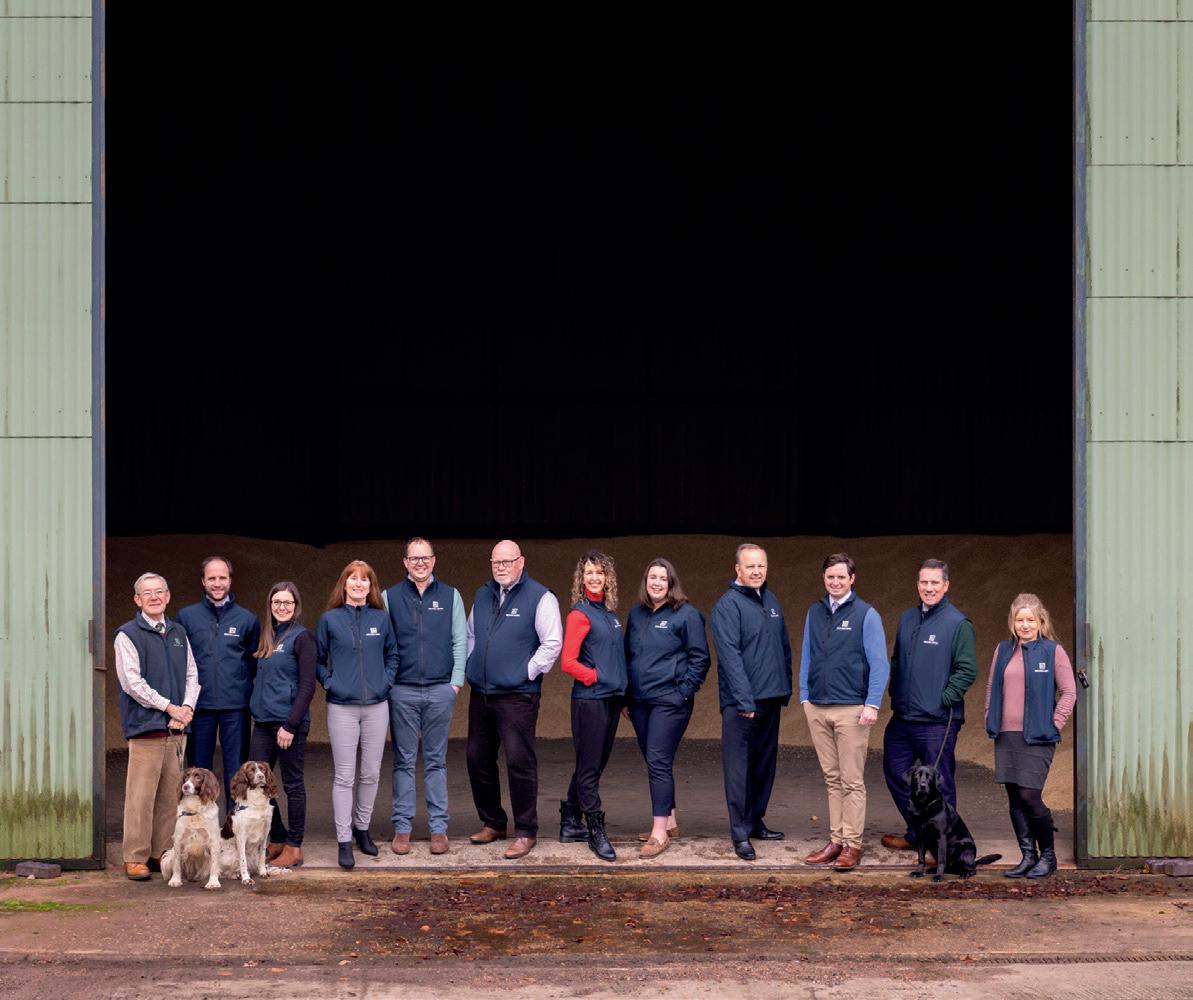

MARCH 2023 • ANGLIA FARMER 47 Succession and Tax Planning Agricultural Susidies, Funding and Compliance Planning Consultancy and Development Business and Farming Structures Land and Property management Farm Business Appraisals, Budgets & Cashflows Adapting to change Strategic Site Promotion Environmental and Natural Capital Finance and Diversification Utility infrastructure Disputes and Expert Witness A WHOLE FARM APPROACH - WORKING TOGETHER FOR YOUR FUTURE How can our team support your business? team@brooksleney.co.uk Get in touch... brooksleney.co.uk
Brexit: The Environmental Land Management Scheme (ELMS) and its potential impact on farming and the countryside – an overview
For better or for worse, the United Kingdom’s departure from the European Union on 31st January 2020 and its associated Common Agricultural Policy (CAP)has led to the phased introduction of ELMS in the UK, explains Tim Logan, Senior Partner & Head of Rural Affairs.
The benefits are said to be environmental; greater sustainable farming and food production; the expedition of the process of application and payment of grants and subsidies; less punitive monitoring by DEFRA (assistanceratherthancriticism) ; and less red tape. Free advice on ELMS is available from Government appointed agencies to assist with transition.
Stated Government policy
To move away from the perceived unfairness of farm subsidies linked to land ownership under the CAP to a UK combination of grants and subsidies targeted towards the environment.
ELMS is divided into three main tiers:
• 1 - Sustainable Farming Incentive (SFI) , which applies to farmers who are claiming the Basic Farm Payment (BFP)and provides payment to encourage improved water and soil quality; biodiversity; and climate change mitigation;

• 2 - Local Nature Recovery (LNR) , which looks to provide grants for schemes to improve the local Environment (thisiscurrently representedbytheexistingCountry Stewardship(CS)scheme,whichwastohave beenreplacedbyLNR,butwhichhasnotyet beenimplemented) ; and
• 3 - Landscape Recovery (LR) , which provides financial assistance for more ambitious environmental recovery through change of land use, change of habit and ecosystems restoration.
Background & Reasons for change
Following the UK’s departure from the EU and its departure from CAP, which provided
the BFP, with associated grants and subsidies designed to preserve, improve, and enhance wildlife habitat and the environment, the Government has introduced ELMS. ELMS is designed to replace the BFP to provide greater fairness between different rural and agricultural sectors, by decoupling the system of grants and subsidies from the extent of land ownership and tenure, to provide greater fairness between large and small, arable and livestock farms. It has been established that, historically, larger farms have benefited from more farm subsidy than smaller to medium sized ones.
In 2023, both the new CAP (EUcountries) and ELMS (UK)have been introduced to enable European countries and the UK to meet their commitments towards mitigating the release of carbon gases into the atmosphere; the effects of global warming and protection/enhancement of the environment. To help achieve these objectives, there is an emphasis on changing farming practices: to encourage farmers and landowners alike, to manage their land in more environmentally sensitive ways, to promote habitat for wildlife, new methods of farming through science and technology, and the allocation of more land to larger scale environmental projects (includingwoodland andforestry) ; on the premise that our food production comes from just 30% of UK land. Do CAP and ELMS have similar objectives and effect?
The new CAP and ELMS schemes appear similar in both stated principles and effect.
In Europe, unlike the UK, farm income subsidies will continue to be linked to land ownership and tenure, to encourage the production of food, but it is recognised that there should be greater fairness between larger and smaller farms, and this has been addressed in the new legislation.
At present, the UK produces about 60% of its annual requirement for food and imports the remainder, primarily from Europe (it actuallyimportsabout80%ofitsannual foodrequirementandexportsabout40%) This is changing. The Government has
now embarked upon new trade deals with Commonwealth and more remote countries, such as Australia, New Zealand, and Canada, which may lead to cheaper imports of poorer quality food and reduce the level of food production in the UK. It still needs a trade deal with the USA, which may cause further erosion of quality in respect of food imports, given the inequality of bargaining power between the two nations. The Government argues that this is not the case and that ELMS will lead to more sustainable farming/food production in the future and that any fears about cheap imports are unwarranted. Will the
loss of BFP affect UK farming?
Quite how the new ELMS scheme will recompense farmers for the loss of BFP is not entirely clear but with the emphasis switching from food production to improved soil and water quality, hedging, forestry and other environmentally sensitive schemes, the answer to this question would seem to be in the negative and that the farming industry, or at least part of it, is at risk of suffering financial hardship as a result.
Arguably, it is going to be the smaller farm/landowners who may suffer most. The Government is encouraging all farmers and landowners to apply for one or more of the grants and subsidies on offer under ELMS and, where possible, to apply in groups (similartoco-operativesinEurope)to achieve this on a greater scale and on a more uniform basis. The priority will be good land husbandry and environmentally sensitive land management. The new grants are also designed to encourage diversity in farming, which has become a feature of many farming operations in recent years.
How does the future for farming in the UK look?
Overall, the future looks difficult for smaller to medium sized farming operations, whether arable or livestock. More imports from nonEU countries offering different standards of food production and cheaper prices are likely to undermine the ability of UK farmers to compete on a level footing with their foreign competitors.
The loss of BFP, which has underpinned many farming operations over many years, may not effectively be replaced by ELMS. Earlier this month, the Government announced financial details for many of the replacement grants and subsidies and whilst, in many instances, these show a marked increase in value, which is encouraging, there has not yet been the level of expected takeup by farmers. It is likely, with the decoupling of BFP, which will end before 2028, that more farmers will be encouraged to participate in ELMS and, in reality, they may have little choice but to do so.
Will land values be affected?
Land prices have increased over the last 25 years and current land prices would appear to be unaffected by the UK’s departure from the EU.
Land remains highly sought after and although the decoupling of farm subsidies may make land acquisition less attractive, most land agents are optimistic that the demand for land, and associated value, will remain high.

With the diminution in farm subsidy linked to land ownership and tenure, and the knockon effect that this may have on farm balance sheets, many small to medium sized farms may take the opportunity to take advantage
of the Government’s lump sum scheme and sell up. If so, it is likely that larger farms, institutional land-owning companies and lifestyle farmers will continue to buy land and keep values high. This is particularly likely, given the current tax benefits which apply to businesses and agriculture, which remain at attractive levels.
Business Property Relief (BPR)and Agricultural Property Relief (APR)afford substantial Inheritance Tax benefits through companies, partnerships, land ownership, buildings, farm machinery, contract farming and farm business tenancies and it is likely that, unless there is any change in legislation, this position will continue for some time to come.

Interestingly, it appears that land put into environmentally sensitive schemes will lose the benefit of APR but will still qualify for BPR, provided that it continues to be part of the farming operation as a result of the grants and subsidies under ELMS.
Summary

The full effects of the UK leaving the EU are not yet fully known but the signs for UK agriculture, despite Government assurances to the contrary, remain uncertain.
The gradual phasing out of BFP, through the introduction of ELMS, with the potential for the cheap importation of food; the lack
of labour resources (seasonalworkers) ; will all, undoubtedly, contribute to challenging times ahead, in what the Government has heralded as being the biggest overhaul in agriculture for over 40 years. Frustratingly, for farmers and environmentalists alike, details of ELMS has been slow to emerge, although there are signs that the speed of disclosure and implementation will start to intensify, as the date for the phasing-out of BFP gets ever closer. Announced increases in payments under the CS scheme are, however, encouraging.
Tim Logan, Senior Partner & Head of Rural Affairs T: 01206 719608, M: 07956 587863 E: tim.logan@ellisonssolicitors.com
ADVERTORIAL
www.ellisonssolicitors.com
'Crucial role' for independent advisers as farm support changes
• End of direct payments looms

• Good advice vital for growers

•
Need to generate farm profits
Independent crop consultants are set to play an increasing role in maintaining farm productivity and profitability over the coming decade.
Arable businesses face a period of huge change, says agronomist Charles Garrard, of consultants Ceres Rural. This includes the phase-out of direct payments which have formed the bedrock of farm support for almost 20 years.
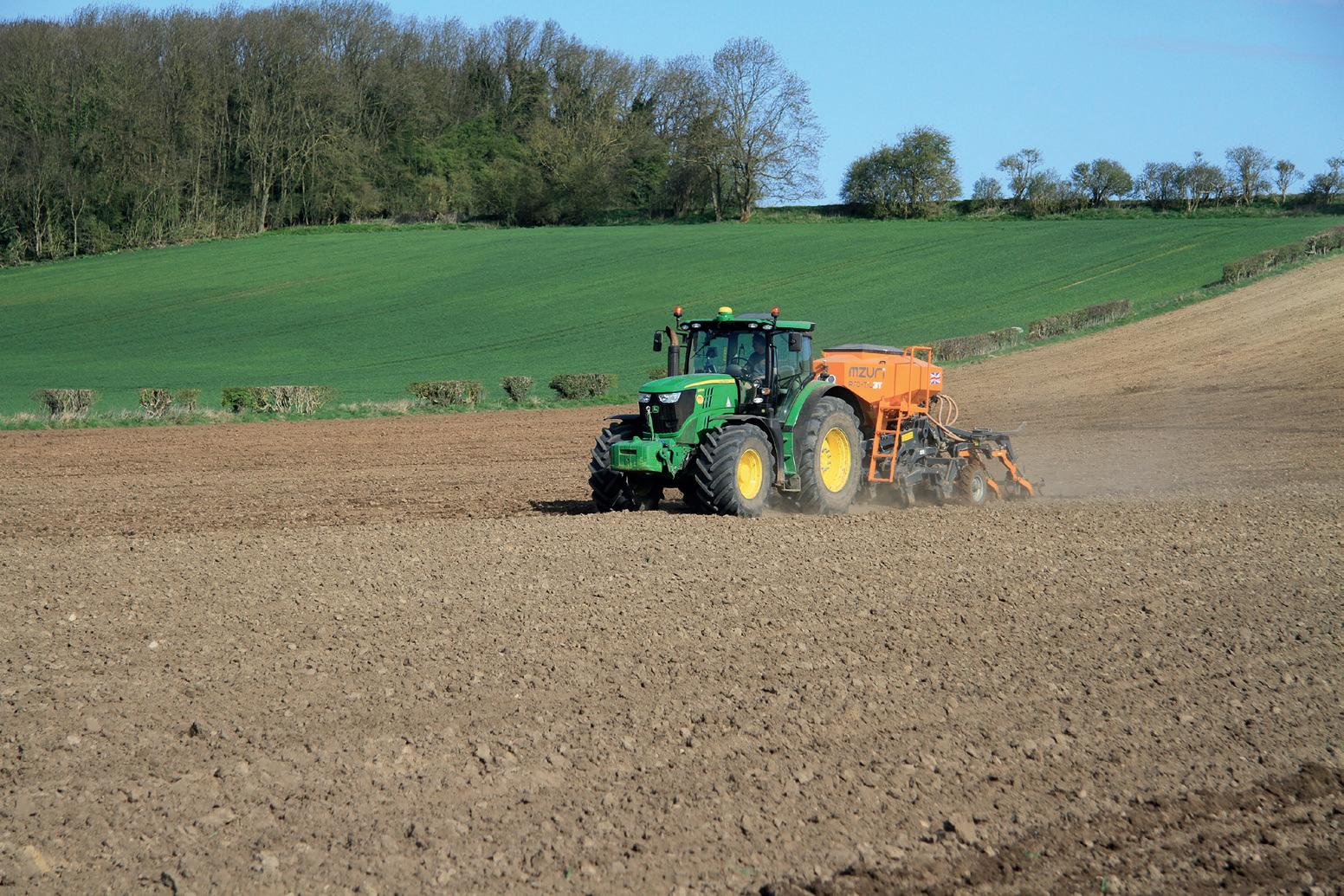
Volatility is also a major test, said Mr Garrard. Unpredictability is now embedded in our climate, politics and commodity and input prices, and this is unlikely to change for the foreseeable future due to world events.
Compounding these two factors is the drive towards net zero. It has prompted action right through the supply chain from field to fork to reduce greenhouse
50 ANGLIA FARMER • MARCH 2023 Professional
services
profitable
More farms will need additional income to remain
changes are, in part, driven by net zero aims.
New incentives introduced as part of the government's Envi-
Growers face huge changes, says Charles Garrard


Mr Garrard pointed out that only the top 25% of growers are making money from all crop enterprises, with the middle 50% only in the black on major crops like wheat and oilseed rape. The bottom 25% are not doing well at all.
But arable producers generally had a good year in 2022, when yields of winter crops were average and commodity prices high.
“With an increasing working capital requirement for our farm businesses and generally higher input costs going forward, these underlying profitability issues won’t be masked much longer,”
Changing systems
The challenges and the subsequent changes to the way farm businesses operate are going to require the best technical advice and Mr Garrard said organisations like AICC are already wellplaced to offer that.

But there will also be a need for an evolution of the agrono-
Why rural businesses need an ESG strategy – and how to get one
Businesses today are finding that their network of partners, suppliers, customers and stakeholders increasingly expect an ESG strategy to be in place –and rural enterprises and farms are no exception. If you haven’t been asked about your ESG credentials yet, the chances are you soon will be.
THE THREE PILLARS
ESG – often used interchangeably with sustainability, though it’s not necessarily the same thing – stands for the three pillars of environment, social, and governance.
In short, a strategy will consider the environmental impact of your products and services: could you, for example, be embracing video conferencing, recycling more, or enhancing the stewardship of land and wildlife?
Social is harder to measure but speaks to how a business adds value to the community and shares values with its customers. Get the E and S right and G should follow.
At its most basic, governance is about demonstrating that a company’s actions are ethical and can be trusted.
FROM THE TOP
Writing a successful ESG strategy can’t be outsourced as the vision needs to come from the top; from those people who are making the all-important investment decisions.
We recommend starting by establishing who is interested, be it the local community, any tenants or tenant farmers, or the local water company, for example. There could be a huge range of stakeholders with a view on your performance. These conversations might sound daunting but it’s necessary to work out what your business can influence, measure and manage.
Then it’s a question of pinning down where your business is going, what matters to it and its supply chain, where the strengths and weaknesses are when it comes to core sustainability drivers, and how data will be collected and assessed.
What’s really important is making sure that the strategy is manageable and meaningful, to ensure that it adds value rather than increasing bureaucracy.
REVIEW
And then, of course, there’s the matter of measuring progress which can be challenging. However, baseline surveys and audits will help give an understanding of where the opportunities may lie.
As ever it will be those businesses that remain proactive and grasp the nettle that have the best possible chance of success – and I would urge anyone who might be seeking further advice to get in touch.
Alex Bragg Savills Cambridge 07807 999 845 ABragg@savills.com

MARCH 2023 • ANGLIA FARMER 51
savills.co.uk
Bale danger warning for farmers
Farmers are being urged to safe guard lives – and livelihoods –when working with hay and straw bales.
“With barn activity increasing dur ing the winter months, following safety guidelines is paramount,” said Rupert Wailes-Fairbairn, of rural insurance broker Lycetts.
Being struck by a falling hay or straw bale caused one in five farming fatalities in 2021/22, according to the Health and Safety Executive.
“In addition to the risks of fatal ac cidents, failure to observe the stipulat ed stack and distance limits for stacks could invalidate insurance cover,” said Mr Wailes-Fairbairn.
“If stack limits are contravened, such as being too close together, too high or undervalued, farmers face sig nificant shortfalls in the event of loss, such as accidental fire or arson.”
Arson attacks
Some 532 fires were recorded at farm premises in England during 2021/22, 429 of them were accidental, and 103 were caused deliberately.
It is imperative that farmers find out if there is a haystack limit defined by value rather than volume, said Mr Wailes-Fairbairn.

“If, for example, a stack with £60,000 worth of hay catches fire, there is a strong chance it exceeds the limit. Often there are distance limits writ ten into policies too, which is usually 20 metres, but this can vary.
“The best way to comply with the terms of a policy is to split stacks and keep them in different locations but checking the policy wording should be the first port of call. The stakes are too high and are certainly not worth the gamble.”
Risk management had an impor
Adequate cover
It is important to ensure appropriate insurance is in place, says Wailes-Fairbairn. “We’ve encountered incidents of
Farm fires – including those started deliberately –can be costly

Fire remains a serious risk, says Rupert Wailes-Fairbairn (below)
near to haystacks, sufficient and accessible on-site fire extinguishers and having water bowsers nearby.
Risk management
“Another risk to consider is that of children gaining entry to a barn and playing among the bales. They could suffer serious – or even fatal – injuries should bales fall.
“Keeping buildings locked and securing and maintaining perimeters can prevent unauthorised entry by children or arsonists.
“Risk management is an often overlooked aspect of farming but taking the necessary precautions can help prevent accidents and financial losses.”
Continued from previous page
This will involve giving direction on all aspects of running a modern arable unit – or bringing in the right associates to help navigate specialist areas – to keep it productive and profitable.
“As independent advisers, we have a greater willingness to find these solutions for our businesses and we will be required to give greater input in the future.
“The evolving and next-generation of agronomists will need a great depth and breadth of knowledge, have an ability to spot opportunities on holdings and embrace innovation.”
Good communication
Communication is paramount, said Mr Garrard. Regular dialogue leads to a greater under-
standing of a client’s expectations and attitude to risk – an area which can help the independent sector pick up business.
Input costs
In recent seasons, when yield potential has dipped due to poor weather,some disgruntled growers have complained that spending on inputs has not dropped at a similar trajectory.
Mr Garrard concluded that the area-based model that underpins most agronomist-client relationships may also need to
change as the adviser’s repertoire expands.
Agronomists will still charge for walking crops, he believes, but they should not undervalue their importance to clients.
“Some will have been with clients for years and have extensive knowledge on the holding.
“This allows them to advise both on the arable side and on strategic issues, so I see a hybrid system where fees are charged on a per acre basis with an extra hourly fee for strategic consultancy.”
52 ANGLIA FARMER • MARCH 2023 Professional services
'Crucial role' for independent advisers as support changes
TIMBER

CARBON UNITS
WOODFUEL


LEISURE ACTIVITIES
IMPROVE SOIL QUALITY
SUPPORT BIODIVERSITY
NATURAL FLOOD MANAGEMENT
PROTECT CROPS & LIVESTOCK




























Familybusinessestablishedforover80years Drainageschemespreparedandundertaken Moledrainingwithacrawlerand Undergroundtrailedmoleploughwatermainsinstalled Suppliersofplasticpipe Ditchmaintenance Treeshearing Tel:01440730716 Mob:07733021557 Land drainage specialists
Suckling
Ancient House, 6 Chapel Street, Steeple Bumpstead, Haverhill, Suffolk, CB9 7DQ Röhren- und Pumpenwerk BAUER Ges.m.b.H. 8570 Voitsberg, Austria, Phone +43 3142 200-0, sales@bauer-at.com, www.bauer-at.com Mobile irrigation management system • Monitoring of Rainstar operation • Optimize your irrigation management • Automatic Error messages • Irrigation control via mobile devices • Team management • Automatic reports Contact Adrian Tindall: T 07708 919597 E a.tindall@bauer-at.com •Booms for lane widths 10 - 96 metres •Hosereels from 150 - 750m pipe length •JCB-engined, silenced pumpsets •Raindancer remote monitoring & control •Fixtures, fittings, pipework and more... visit our website: briggsirrigation.co.uk call us on 01536 260338 or email: enquiries@briggsirrigation.co.uk WATER WHEN & HOW YOUR CROPS NEED IT 54 ANGLIA FARMER • MARCH 2023
W R
& Sons
Drought could return this summer, farmers warned
• Impacts still being felt on farm
• More rain needed – and soon
•
Better management important
Another hot dry spell could see drought conditions return this summer – despite winter rainfall replenishing most water levels, farmers have been warned.
The Environment Agency and National Drought Group say they are continuing to take action to reduce drought risks, improve water supplies and protect the environment following the driest summer for almost 30 years in 2022.

Water resources remain at risk, despite big improvements following five consecutive months of above average rainfall. East Anglia remains in official drought status, with most other areas now recovering.
“While most water levels have returned to normal across much of the country, low rainfall in recent weeks highlights the importance of remaining vigilant,” said drought group chairman and Environment Agency executive director John Leyland.
Action needed
“We cannot rely on the weather alone, which is why the Environment Agency, water companies and our partners are taking action to ensure water resources are in the best possible position both for the summer and for future droughts.”
Total reservoir capacity across the country stood at 88% the beginning of February. This compares with 49% at the end of September 2022, when reservoirs were at their lowest following last summer's drought.
Low rainfall across England since the end of January means 63% of rivers are below normal levels for this time of year. Some storage reservoirs are lower than anticipated and groundwater levels in Norfolk are only now beginning to rise slowly.
The National Drought Group includes senior decision-makers from the Environment Agency, government,
the Met Office, water companies, key farming organisations and environ mental groups.
Rainfall vital
Further steady rainfall is needed to ensure the nation’s water reservoirs were in a good position ahead of the warmer, drier, summer months, says the group. Rainfall over the next three months will be vital to reduce summer drought risk.
The drought group said it would take time for the natural environment to recover from the impacts of last sum mer. Its said its members were plan ning for the worst case scenario of an other hot, dry spell this summer.
Farmers should take action to man age water resources to reduce the risk of facing summer drought measures. These could include temporary use bans and a ban on taking additional water from the environment.
Mr Leyland said: “As ever, it is impor tant that we all continue to use water carefully to protect not just our water re sources, but our precious environment and the wildlife that depends on it.”
Lessons to be learned from last year
Water companies, retailers and regulators must learn from the response to the 2022 drought – and improve the way they manage and respond to future droughts.
That is the message from the National Drought Group. It says water companies have continued to maximise opportunities to improve water supplies over winter, including identifying new water sources and reducing leakage.
Precautionary planning
All sectors are now undertaking precautionary planning in the event that hot, dry weather returns in the summer, and continue to work closely together to support water supplies across the country.
With England experiencing more extreme weather more often, the Environment Agency has determined additional drought permits to help refill reservoirs and improve water supplies ahead of spring.
Farmers too are working to improve the drought resilience of their businesses. The Environment Agency says it is working closely with the Rural Payments Agency to ensure abstraction licences associated with reservoir grant applications are determined on time.
The Environment Agency says it is clear that planning for increasingly extreme weather will be essential for everyone to prepare for the impacts caused by extreme weather events – including both drought and floods.
MARCH 2023 • ANGLIA FARMER 55 Water
Lack of rain affects soil structure as well as crop performance, says the National Drought Group
More water needed to recharge aquifers

• Annual rainfall below average
• Temporary restrictions possible
• East Anglia is still driest region
Groundwater sources in the east ern region have seen only 80% of average rainfall over the last 12 months with more needed to re charge underground aquifers.
Many of the region’s reservoirs look full after months of healthy rainfall and careful management. But Angli an Water says what is happening be low ground is equally important as the region heads into spring.
East Anglia remains in drought sta tus despite average rainfall during the last three months across most of the region, explained Anglian Water head of water resources and drought Sarah Underhill.
While this has helped reservoirs recover to the levels expected for this time of year, the region’s groundwater sources in the east remain well below normal levels, with a deficit of around six weeks worth of rainfall.
“Water is one of our most precious resources,” said Ms Underhill.
“It’s why we manage it with such care and plan ahead for the future to ensure there’s enough to go round our rapidly growing customer base, while leaving plenty in the environment for nature to thrive.”
East Anglia is the country’s driest region – and the most vulnerable to climate change. Anglian Water says it invests tens of millions every year to build our region’s resilience against the challenges we face.
around 90% of our customers having meters means we’re able to manage drawn out periods of unusually dry weather. But what we can’t do is make more water.”
Last year, the lack of rain saw the Anglian region given drought status by the Environment Agency in August. But even with resilience masures in place, plans to help reduce demand for this summer are not off the table just yet.
Water sources
Across the Anglian region, about half of customers’ water supply comes from surface water such as rivers and reservoirs; with and the other half coming from groundwater sources or underground aquifers.
The period between November and the end of March is typically referred to as the refill period across the water industry. It is the time when river flows
recover, meaning more water can be abstracted and stored in reservoirs.
“This winter, rivers and groundwater stores across the east of our region, in particular, have not recovered as quickly from the dry summer simply because some areas have only seen around 80% of the long term rain fall over the last 12 months.
“We’re continuing to mon itor the situation closely but if we don’t get the predict ed rainfall over the next couple of months before spring, we may still need to consider temporary re strictions this summer in certain areas.”
well below normal levels
Anglian Water says it is continuing to plough more resources into fixing leaks as it tries to make the most of scarce supplies.
The water company says it is also on track to install over 1 million smart meters in customer homes by 2025 to help customers manage their water use and identify customer side leakage on pipes in homes.
“We live in the driest part of the country and we know this year is going to be tough for our customers, as the cost-of-living increases for us all,” says Anglian Water head of water resources and drought Sarah Underhill.

“It makes sense to use water as sustainably as possibly; it not only helps customers to save
money on their water and energy bills but also hugely benefits our environment and means we are prolonging these supplies for as long as possible.
Anglian Water is also planning to ensure supplies are there for generations to come while protecting the environment.
Proposals are also underway for two new reservoirs – the size of existing Grafham Water –in Lincolnshire and the Fens.
Boots are already on the ground installing hundreds of kilometres of new strategic pipeline to bring surplus water from the wetter north of the region down to the dry south and east, as part of a project costing over £500m.
56 ANGLIA FARMER • MARCH 2023 Water
Water company makes most of supplies
Temporary restrictions may be needed, says Sarah Underhill
The perfect fit for irrigation solutions






Wright Rain UK 2018, a quality name, providing a quality product. We are ideally placed to serve our dealers across the whole of the UK with our full range of aluminium pipes, fittings and parts available from stock. We specialise in agricultural and horticultural clear crop irrigation and land dispersal of dirty water.

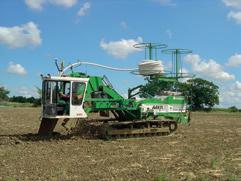


The Wright Rain range of aluminium pipes and fittings are known all over the UK for their superior quality and durability, and have become the industry standard for many applications. Their light weight, strength and corrosion resistance makes them ideally suited for portable irrigation systems.

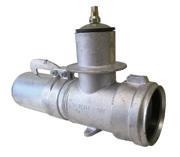







For 90 years, TW Page & Son Ltd has been serving the agricultural community of East Anglia • Borehole drilling • Submersible pumps for
water supply • Iron, manganese & nitrate removal • Reverse osmosis units • Ultra-violet disinfection
Water softeners • Water main laying & trenching services Contact us for a free quotation 7 Buxton Road, Frettenham, Norwich NR12 7NQ Tel: 01603 898071 Email: admin@twpage.co.uk Water Supply Engineers and Borehole Drillers Suppliers and Installers of Pumps and Water Treatment Equipment
fresh
•
Fittings & Parts
Aluminium
Wright Rain UK 2018 Bawtry Road, Tickhill, Doncaster DN11 9EX Tel: +44 (0)1302 756000 Contact John for your local Wright Rain dealer and a copy of our current brochure. Scan here for easy access to our full irrigation range! DRAINAGE (20) LTD • Agricultural & Amenity Drainage • Water Supplies, Mole Draining • Ditching & Ancillary Works Lodge Works, Great Ashfield, Bury St Edmunds, Suffolk IP31 3HA MEMBER OF THE LAND DRAINAGE CONTRACTORS ASSOCIATION TEL 01359 259424 FAX 01359 258073 www.milesdrainage.co.uk the Land Drainage Specialists TEL 01359 259424 www.milesdrainage.co.uk DRAINAGE LIMITED • Agricultural & Amenity Drainage • Water Supplies, Mole Draining • Ditching & Ancillary Works Lodge Works, Great Ashfield, Bury St Edmunds, Suffolk IP31 3HA MEMBER OF THE LAND DRAINAGE CONTRACTORS ASSOCIATION TEL 01359 259424 FAX 01359 258073 www.milesdrainage.co.uk the Land Drainage Specialists • Agricultural & Amenity Drainage • Water Supplies, Mole Draining • Ditching • Utility Installation trenchers@miles drainage.co.uk
Challenges around future water availability in East Anglia and the East Midlands came under the spotlight at an NFU conference.
Held at Park Farm, Thorney, in Cambridgeshire, the conference highlighted the seriousness of the situation and the importance of working together to build resilience and secure water for food.


Speakers included Water Resources East managing director Daniel Johns,
consultant Lindsay Hargreaves, Norfolk farmer Will Jolly, and Andy Turner and Tom Schnetler from the Environment Agency.
The scale of the challenge is being exacerbated by climate change. By 2050, the region will need a further 444mlitres of water daily with agriculture alone requiring 64% of that volume, said Mr Johns.
Water Resources East aims to create a regional plan for East Anglia which aims to help secure adequate supplies across different sectors. A public consultant on the organisation's draft plan closed last month.

Industry experts
Conference discussion sessions were chaired by industry experts including Jerry Knox, of Cranfield University; and Steve Moncaster, technical director for the Broadland Agricultural Water Abstractors Group.
NFU National Water Resources Specialist Kelly Hewson-Fisher organised the event with regional colleagues. She said: “The aim of the conference was to bring members up to date on the challenges that lay ahead on water availability.
58 ANGLIA FARMER • MARCH 2023 Water
• Increase in demand for water • Reservoirs to secure supplies • Changes to abstraction rules
NFU event highlights water challenges
ALLAN COLLYER Precision farming requires precision drainage (with RTK GPS mapping and machine control) www.collyerdrainage.co.uk Cost effective land drainage Most modern equipment Excavations & precision levelling Contact 01986 781404 High Street, Ilketshall St Margaret, Bungay, Suffolk NR35 1NA Agricultural Water Management Sustainable water resource management Abstraction licence renewals Borehole, reservoirs, surface abstraction, infrastructure, IT control Grant aid applications Reservoir planning, construction and management Water efficiency Water quality issues Contact: 01263 733395 07785 935498 andrew.alston@farmline.com www.awmcl.co.uk
“We’re aware the impacts that climate change could bring and we hear the phrases of warmer and drier summers and wetter winters but what does that mean in terms of water availability and what are the impacts on individual businesses?”
New reservoirs
Challenges also lie with regulation. Ms Hewson-Fisher said it was important for licence holders to look at opportunities to build resilience and review their abstraction licences to ensure any agreements still meet farm business requirements.



Water Resources East is developing a landscape-scale water management strategy with Anglian Water, the Environment Agency and other key stakeholders across the Fens.

Sitting at the heart of this overall strategy are two new proposed reservoir systems – one in the south of Lincolnshire near Sleaford, and the other near Chatteris, Cambridgeshire.
The reservoirs are linked into the network of internal drainage board assets and main rivers, using high and excess flows as potential sources of water for the reservoirs.
Combined with potential new barrages on the large rivers systems, this overall vision has the potential to drive enormous economic, environmental and social benefits which will be felt across the region. This will support the delivery of the specific Fens measure in the Environment Agency's new National Flood and Coastal Erosion Risk Management Strategy. It will be a key element of the proposed UNESCO Fens Biosphere designation.
Partnership
The existing multi-sector South Lincolnshire Water Partnership is being joined by a new Fens Water Partnership, ensuring that the design of both reservoirs delivers the maximum possible benefit for people and the environment.
The Lincolnshire Reservoir and Fens Reservoir and associated water transfers are both advanced in their outline design.

They are both defined as Strategic Regional Options and have funding from the Regulators Alliance for Progressing Infrastructure Development.

Anglian Water water resources strategy manager Geoff Darch said the project would build on decades of infrastructure investment.
“To keep taps running in the future, we’ll need more water storage in our region, in the form of new reservoirs.” Plans for the reservoirs were developed over 10 years, with the water company sharing the findings of a site selection study last autumn in what was the first of a multi-phase consultation on the proposals.
Mr Darch said: “Following a thorough and multi-stage site selection assessment process, assessing a wide range of criteria, we have now identified the best performing locations.


He added: “We think it’s right those who are potentially most affected find out first and have the opportunity to ask us any questions about what this might mean for them.”

The project would help secure water supplies for future generations, so Anglian Water could address the challenges of a changing climate, environmental protection and rising demand due to population growth.

60 MARCH 2023 • ANGLIA FARMER 59
Important to review abstraction licences
“
Abstracters should check their licences, says Kelly Hewson-Fisher
Celebrating OFTRADING EXPERTS IN ALL AREAS OF WATER MANAGEMENT COMPLETE DESIGN & INSTALLATION SERVICE TRUSTED BY LANDOWNERS & FARMERS WORKING ACROSS EAST ANGLIA & FURTHER AFIELD williammorfoot.co.uk sales@williammorfoot.co.uk Want to know more? Read or download our brochures at: 01362 820371 Call us on: Raising yields by unlocking your soil’s potential! HOW DOES INVESTING IN LAND DRAINAGE HELP YOUR FARM? IMPROVED TIMELINESS OF OPERATIONS AEROBIC SOILS WITH CONSISTENT PROPERTIES LOWER YOUR FUEL BILLS IMPROVE YIELDS Agricultural Land Drainage Contractors Anglia Farmer 2 R2.indd 1 03/03/2022 19:46
Inspections are 'opportunity to protect environment'
Farmers should use Environment Agency inspections as an opportunity to receive advice on making improvements to protect watercourses, says the NFU.

Receiving an unexpected letter from the Environment Agency can be concerning, says the union. It wants to help members make an inspection an opportunity to receive advice on making improvements where possible.
The agency has been working to increase its inspection rates for agriculture. It has employed an extra 84 officers to undertake more farm inspections and provide support to farmers in protecting the environment.
As part of this expanded coverage, the agency has been focusing on delivering an advice-led approach that aims to help farmers make improvements,

rather than seeking prosecutions.
The NFU has been working with the agency so farmers can best prepare themselves for a visit.
This approach – in coordination with the Catchment Sensitive Farming initiative – has helped deliver benefits to farmers across England.
Expanded coverage
Inspectors check farmers are complying with environmental regulations, including those controlling slurry, silage, nitrate, and diffuse pollution.

Farms are chosen for a variety of reasons, usually due to concerns over the water quality in the local rivers.
Being selected for an inspection doesn’t mean a farm business has done something wrong, says the Environment Agency. Many inspections are
Farmers, watercourses and the environment have benefited

selected on a risk basis, rather than because of anything untoward.

The agency says it continually monitors main watercourses with high or increasing nitrate or phosphate levels
All farms in a river catchment could be visited with farmers advised on potential pollution issues or ways to improve farming practices.
“We are not here to catch you out,” explains senior Environment Agency officer Karen Price.
“We are here to help you understand what the regulations mean, assess if you are complying with them and, if you aren’t, to work with you to make changes to protect the environment and reach compliance.”
60 Water
Monitoring • Remote Control • Deployment • Planning & much more +44 1353 675 265 www.rstirrigation.co.uk We are the EXCLUSIVE UK Distributor and Importer for Raindancer








MARCH 2023 • ANGLIA FARMER 61 • floating pumps • submersible pumps • booster pumps • borehole pumps & drilling • eel screening equipment Supply & installation of high-quality products to improve on-farm irrigation efficiency: • variable speed control panels • underground mains • hydrant assemblies • thrust boring Improving Irrigation Efficiency PrimeTime 2020 Pump Control System • Inverter for each pump motor • Variable speed pumps • Operation status in real-time remotely • Adjust through the app & receive direct alerts 01728 668 668 prime@irrigation.uk.com For All Enquiries 01945 860318 www.thefengroup.co.uk Fen Group, Needham Bank, Friday Bridge, Wisbech, Cambs PE14 0LH • Irrigation Reservoirs / water control structure installations • Dredging & Piling operations • Embankment protection installations • Roadway & Track Installations • Ground & Earthworks • Plant and Operator Hire Wetland Creation Irrigation Reservoirs Dredging Plant & Operator Hire Ditching & Land Drainage Vegetation Management Long Reach Equipment Wetland Creation Irrigation Reservoirs Dredging Plant & Piling Embankment Protection
FINAL SAY Fen Tiger
Supermarket Sweep
Big retailers are making big profits at the expense of farmers and suppliers, says Fen Tiger.
There is no doubt that people have had cheap food for far too long – without appreciating that food prices are decided by the major supermarkets, not by farmers.
One big retailer has just reduced its prices on hundreds of items. Some are everyday necessities, others are luxury products. This supermarket wants to reduce its costs by up to 20% – enough to win back some market share from cheaper discounters.

While this is good news for customers, it is not good news for farmers and suppliers. The last time I was in a supermarket my grandson was pleased to see his favourite crisp range was on special offer: selling for half its usual price.
I explained that the supermarket was perhaps not being over-generous. Instead, they had probably beaten down the price paid to the supplier. That way it was the supplier who lost out, rather than the retailer. My grandson questioned whether this would be the case. Surely the supermarket would not renegue on a price agreement?
Profit margin
The UK's biggest supermarket is running at a 4% profit margin while other less popular – and smaller retailers – have margins that are even slimmer. Little wonder that one supermarket chairman claims suppliers are profiteering by jacking up prices more than they need.
Some might say it's a valid claim. After all, soaring inflation means food is becoming more expensive, with a basket of goods increasing by more than 16% in some cases.
But farmers are price takers, not price makers. It's not us making the money – a point made well by our own local NFU county chairman agrees.
Farmers and other suppliers have had to cope with rising input prices and a huge rise in electricity and gas prices.
So who is right? The supermarkets or the farmers? Are farmers really the bad guys in this war of words?
The NFU says no – and readily available ag-inflation figures show that many growers and livestock producers have been taking a big hit on farmgate prices.
Yes, commodity prices have risen – but not by enough in many cases to offset huge increases in input costs.
Food security
If out government is really interested in food security, it would find a way to promote homegrown produce and allow UK farmers to become more efficient and profitable.
Instead, in my part of the world, a fair number of producers are scaling back.
The potato area here has been reduced due in no small matter to the cost of production and the cost to finance the growing crop. Major buyers are limiting contracts and instead buying on the open markets and sourcing from abroad.
Depending on indiviual circumstances, it has been suggested that it costs more than £250 to grow a tonne of potatoes. With growers receiving much less than that, it’s no wonder fewer potatoes are being grown.
It is worrying to think that while food is in plentiful supply from beyond these shores, here at home nobody other than farmers and a few food fanatics seem to care.
Maybe more people will come to their senses when domestic supplies have dried up and import prices soar.
Farm support

Sadly, in today’s economic climate it’s hardly profitable to farm food. Hence why the majority of farms have other interests – rightly or wrongly, food production is often supported by an on-farm diversification or an off-farm job.
The government says it wants to support farmers – by encouraging them to undertake environmental work rather than producing food. Yet it is still failing to provide enough information and cash for any of Defra's new environmental schemes.
It’s a wonder many farmers have the financial clout or enthusiasm to carry on. But carry on they do. It seems like a continual battle, although I have always been told that farming is a way of life without much financial reward.
Big retailers rule the roost, despite the Grocery Code Adjudicator who is meant to act as a supermarket watchdog and keep them in check. In my mind, the only answer is for farmers to work together and run their own supermarket. It has worked abroad, but has never been the case here.
“
It's not us making the money
62 ANGLIA FARMER • MARCH 2023
Custom Moulded Ear Defenders

Ultra comfortable, re-usable & last for years. Acoustic filter allows you to still hear everything, whilst protecting you from harmful noise levels. Available with CE approval. Earpieces are custom moulded from soft silicone, and offer the highest degree of comfort whilst providing an effective acoustic barrier. Choice of colours available. Ideal for shooting - maximum protection without imparing hearing. Autotel Ltd - 01508 528837 • www.autotelradio.co.uk
NURSERY
Sandy Lane Nursery

Wattisfield, Diss, Norfolk
Native and ornamental trees, hedging and shrubs
Tel: 01359 251678
sales@sandylanenursery co uk
www sandylanenursery co uk
Grademore Ltd

Suppliers of Reclaimed Telegraph Poles, New & Reclaimed Railway Sleepers, Concrete Railway Sleepers, Motorway Crash Barriers. 01760 724237
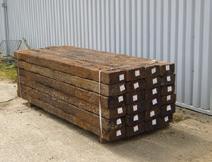

STORAGE TANKS KING
STORAGE TANKS KING
Horizontal Cylindrical Tanks
Horizontal Cylindrical Tanks

From 54,500 litres to 27,250 litres (12,000 - 6,000
From 54,500 litres to 27,250 litres (12,000 - 6,000

Don’t run short of fuel this Winter!
Single and twin compartments, with cradles
Single and twin compartments, with cradles
Buy or hire a storage tank from Kings


Bunded Tanks
Bunded Tanks
4500L – 38,600L Bunded Fuel Tanks
From 27,000 litres to 10,000 litres (6,000 - 2,000 With cabinet, guage and alarm
From 27,000 litres to 10,000 litres (6,000 - 2,000 With cabinet, guage and alarm
c/w cabinet, gauge and alarm
All suitable for fuel, water and effluent Call today for details
2730L – 54,500L horiz/cyl
All suitable for fuel, water and effluent Call today for details
Water Tanks
single or twin comp. with cradles
Sprayed Foam Insulation Specialists


FOR A FREE QUOTE CALL: 01405 812682

Crow Tree Farm, Crow Tree Bank, Thorne Levels, Doncaster, South Yorkshire, DN8 5TF info@webstersinsulation.com www.webstersinsulation.com

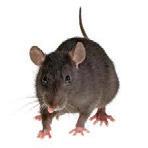
TANKS INDUSTRIAL STORAGE TANKS HIRE - NEW - USED 01502 710100 info@regaltanks.co.uk EAR PROTECTION COMMAND PEST CONTROL LTD • GRAIN MONITORING • GRAIN STORE TREATMENTS
01787 248049 Local staff in all regions covered by Anglia Farmer www.commandpestcontrol.co.uk Command House, Church Lane, Preston St Mary, Suffolk CO10 9NQ • RODENT CONTROL • GRAIN FUMIGATION AF
PEST CONTROL
TEL:
DIRECTORY
INSULATION
TO ADVERTISE IN THE ANGLIA FARMER BUSINESS DIRECTORY CALL 01502 725144
WANTED LANDSCAPING & MAINTENANCE
www.grademore.com enquiries@grademore.com
WANTED TO RENT LARGE LIVESTOCK BARN FOR WINTER 2022/23 PREFERABLY NORFOLK/SUFFOLK Please email farmoffice@yahoo.com with details/costs T.G. ASKEW T.G. ASKEW BLUE PUMP FARM, LOW ROAD, BRESSINGHAM, DISS, NORFOLK IP22 2AA Bulk haulage • Aggregate Road Planings • Stock Feed For further information please contact T: 01379 388156 F: 01379 388109 Email: jeremy@tgaskew.co.uk 01638 712328 tanks@thekinggroup.co.uk STORAGE TANKS KING Tel 01638 712328 www.thekinggroup.co.uk/tanks
MATERIALS & MACHINERY
Tel 01638 712328 www.thekinggroup.co.uk/tanks

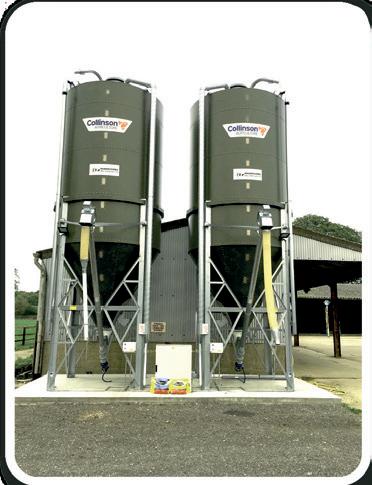

Vegetable and Grain Storage, Drying and Handling Equipment, Pig and Poultry Feeding Systems, Bulk Feed Hoppers www.marrisonagriculture.co.uk 01953 851 771 www.marrisonagriculture.co.uk 01953 851 771 Marrison Agriculture Limited, Unit 8 Ironside Way, Hingham, Norfolk, NR9 4LF.
Potato
Equipment Agricultural Buildings
Livestock Feeding
Store











































































































































































































































































































































































































































































































